 Search by Keyword
|
“TWO OF US”
(John Lennon – Paul McCartney)
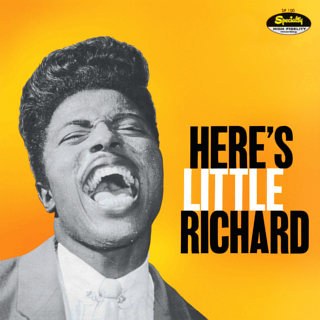 The musical influences on The Beatles' early songs can be somewhat easily detected, especially in hindsight. At the time that this music was released in the early and mid '60s, the British Invasion sound seemed unique to American ears. However, as years went by, one could readily detect the inspiration for these early Beatles tracks, primarily being from their American music heroes. The recordings of Little Richard, Buddy Holly, Carl Perkins, Smokey Robinson, Arthur Alexander and even Elvis, became apparent as the template upon which they drew. The musical influences on The Beatles' early songs can be somewhat easily detected, especially in hindsight. At the time that this music was released in the early and mid '60s, the British Invasion sound seemed unique to American ears. However, as years went by, one could readily detect the inspiration for these early Beatles tracks, primarily being from their American music heroes. The recordings of Little Richard, Buddy Holly, Carl Perkins, Smokey Robinson, Arthur Alexander and even Elvis, became apparent as the template upon which they drew.
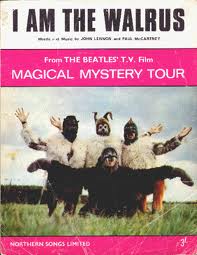 As we entered the later Beatles catalog, however, it appeared that they had come into their own style that was unique to themselves. Tracks like “I Am The Walrus,” “Lucy In The Sky With Diamonds” and “Hey Jude” were surely developed more from the minds of their composers than being a mimic of outside sources. Direct inspiration was now in the form of a pastiche instead of a desire to innocently capitalize on their heroes style to achieve fame for themselves. This is evident in “Lady Madonna” (Fats Domino), “Back In The USSR.” (Chuck Berry, Beach Boys) and “Sun King” (Fleetwood Mac), as well as period pieces such as “When I'm Sixty-Four” and “Honey Pie.” As we entered the later Beatles catalog, however, it appeared that they had come into their own style that was unique to themselves. Tracks like “I Am The Walrus,” “Lucy In The Sky With Diamonds” and “Hey Jude” were surely developed more from the minds of their composers than being a mimic of outside sources. Direct inspiration was now in the form of a pastiche instead of a desire to innocently capitalize on their heroes style to achieve fame for themselves. This is evident in “Lady Madonna” (Fats Domino), “Back In The USSR.” (Chuck Berry, Beach Boys) and “Sun King” (Fleetwood Mac), as well as period pieces such as “When I'm Sixty-Four” and “Honey Pie.”
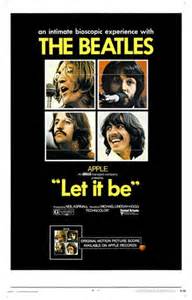 One source of inspiration for The Beatles during their formative years, as well documented in interviews from various sources, was The Everly Brothers. The harmonies of this sucessful duo may be subtly detected in the early Beatles output, such as on “Please Please Me,” but it had never been capitalized upon to the degree that many of their other exemplars had been. It wasn't until January of 1969, during their rehearsals for what became the “Let It Be” film and soundtrack album, that a song entitled “Two Of Us” came into being. One source of inspiration for The Beatles during their formative years, as well documented in interviews from various sources, was The Everly Brothers. The harmonies of this sucessful duo may be subtly detected in the early Beatles output, such as on “Please Please Me,” but it had never been capitalized upon to the degree that many of their other exemplars had been. It wasn't until January of 1969, during their rehearsals for what became the “Let It Be” film and soundtrack album, that a song entitled “Two Of Us” came into being.
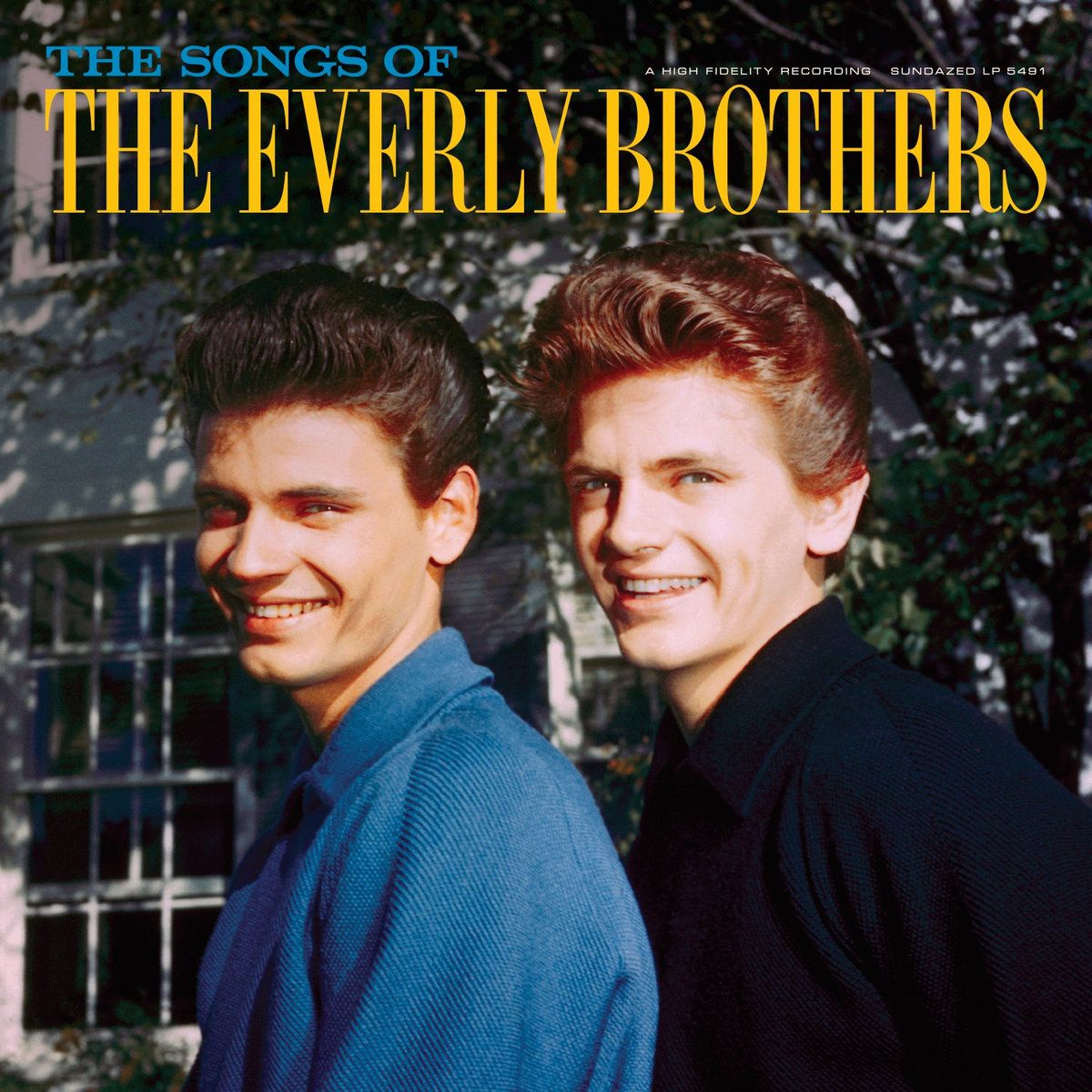 Paul McCartney and John Lennon admiringly channeled The Everly Brothers into the arrangement of the song, rehearsals showing the vocalists sharing one microphone throughout, referring to each other as “Phil” and “Don,” and sometimes even transitioning into impromptu versions of old Everly Brothers classics. The result is, not simply a pastiche, but a genuine tribute to one of their earliest role models. In the "Track By Track" section of the book that accompanies the "Let It Be" Anniversary edition, Paul states: "You look at anyone's career and there was always someone influential in the beginning. I was Elvis. I was Little Richard. George was Carl Perkins, John was Gene Vincent and Chuck Berry. We all had our alter egos, and we each had a few of them. And we were The Everly Brothers." Paul McCartney and John Lennon admiringly channeled The Everly Brothers into the arrangement of the song, rehearsals showing the vocalists sharing one microphone throughout, referring to each other as “Phil” and “Don,” and sometimes even transitioning into impromptu versions of old Everly Brothers classics. The result is, not simply a pastiche, but a genuine tribute to one of their earliest role models. In the "Track By Track" section of the book that accompanies the "Let It Be" Anniversary edition, Paul states: "You look at anyone's career and there was always someone influential in the beginning. I was Elvis. I was Little Richard. George was Carl Perkins, John was Gene Vincent and Chuck Berry. We all had our alter egos, and we each had a few of them. And we were The Everly Brothers."
Songwriting History
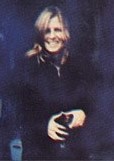 While The Everly Brothers influence was developed during the rehearsal stage of the song in January of 1969, Paul's original inspiration for “Two Of Us” came from another source. One can be excused for thinking that the two people being referred to in the song were John and Paul, possibly reminiscing about their formative years together “burning matches, lifting latches” etc., but the characters in this story were Paul and his new girlfriend Linda Eastman. While The Everly Brothers influence was developed during the rehearsal stage of the song in January of 1969, Paul's original inspiration for “Two Of Us” came from another source. One can be excused for thinking that the two people being referred to in the song were John and Paul, possibly reminiscing about their formative years together “burning matches, lifting latches” etc., but the characters in this story were Paul and his new girlfriend Linda Eastman.
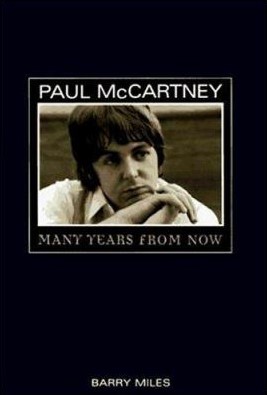 “When we first met,” Paul relates in his book “Many Years From Now,” "it would be late at night after a session or something and I would be trying to unwind and so we would go for a drive around London in the late-night clear streets, two in the morning or something, and she'd say, 'Try to get lost.' And I'd say, 'That goes against every fiber in my body. As a driver, the one thing you never try and do is get lost!' She said, 'Try it.' And I'd try it; 'For you I'll try it.' So I'd turn off little streets 'round Battersea and down little back streets – 'Hey, this is great' – but pretty soon you'd see a big sign, 'West End.' Signs everywhere. It's actually very difficult to get lost 'round London. We used to end up in the greatest of places that I'd never been to before. We never did get lost. So that kind of freedom was part of our thing." In his book "The Lyrics," Paul adds: "She loved getting lost. And she pointed out to me quite rightly that there would always be a sign somewhere saying 'London,' so we'd just follow that." “When we first met,” Paul relates in his book “Many Years From Now,” "it would be late at night after a session or something and I would be trying to unwind and so we would go for a drive around London in the late-night clear streets, two in the morning or something, and she'd say, 'Try to get lost.' And I'd say, 'That goes against every fiber in my body. As a driver, the one thing you never try and do is get lost!' She said, 'Try it.' And I'd try it; 'For you I'll try it.' So I'd turn off little streets 'round Battersea and down little back streets – 'Hey, this is great' – but pretty soon you'd see a big sign, 'West End.' Signs everywhere. It's actually very difficult to get lost 'round London. We used to end up in the greatest of places that I'd never been to before. We never did get lost. So that kind of freedom was part of our thing." In his book "The Lyrics," Paul adds: "She loved getting lost. And she pointed out to me quite rightly that there would always be a sign somewhere saying 'London,' so we'd just follow that."
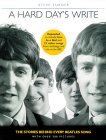 In Steve Turner's book “A Hard Day's Write,” Linda herself adds to the story: “As a kid I loved getting lost. I would say to my father, 'Let's get lost.' But you could never seem to be able to get really lost. All signs would eventually lead back to New York or wherever we were staying! Then, when I moved to England to be with Paul, we would put (his sheepdog) Martha in the back of the car and drive out of London. As soon as we were on the open road I'd say, 'Let's get lost' and we'd keep driving without looking at any signs. Hence the line in the song, 'two of us going nowhere' (sic).” In Steve Turner's book “A Hard Day's Write,” Linda herself adds to the story: “As a kid I loved getting lost. I would say to my father, 'Let's get lost.' But you could never seem to be able to get really lost. All signs would eventually lead back to New York or wherever we were staying! Then, when I moved to England to be with Paul, we would put (his sheepdog) Martha in the back of the car and drive out of London. As soon as we were on the open road I'd say, 'Let's get lost' and we'd keep driving without looking at any signs. Hence the line in the song, 'two of us going nowhere' (sic).”
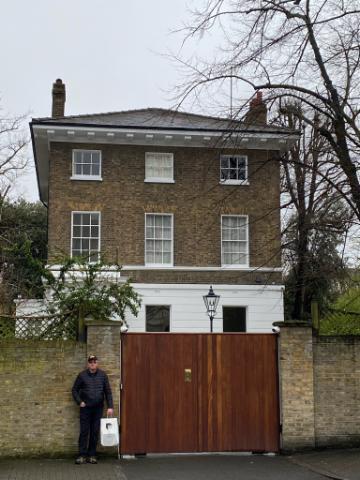 Paul's lifestyle as a Beatle, with highly organized non-stop demands and commitments, was very constricted. He had been constantly told, by managers, publicists and corporations, what to do and when, leaving not much time for fooling about and wasting time. He did enjoy a degree of freedom as the group's touring years ended in 1966, but his discipline in the recording studio continued his conditioning as to time management. “I think I'd trained myself never to appear tired,” Paul remembers. “Always to be on the ball. 'Sorry I'm yawning. I'm sorry,' which is complete bullsh*t. It's a Beatles thing, you had to be there, you had to be on time.” This changed, however, in late September of 1968, when Paul invited Linda Eastman to fly to London and stay with him at his St. John's Wood home. It was during her stay with Paul, while The Beatles were winding up the recording of the “White Album,” that he and Linda would drive off without any destination. Paul's lifestyle as a Beatle, with highly organized non-stop demands and commitments, was very constricted. He had been constantly told, by managers, publicists and corporations, what to do and when, leaving not much time for fooling about and wasting time. He did enjoy a degree of freedom as the group's touring years ended in 1966, but his discipline in the recording studio continued his conditioning as to time management. “I think I'd trained myself never to appear tired,” Paul remembers. “Always to be on the ball. 'Sorry I'm yawning. I'm sorry,' which is complete bullsh*t. It's a Beatles thing, you had to be there, you had to be on time.” This changed, however, in late September of 1968, when Paul invited Linda Eastman to fly to London and stay with him at his St. John's Wood home. It was during her stay with Paul, while The Beatles were winding up the recording of the “White Album,” that he and Linda would drive off without any destination.
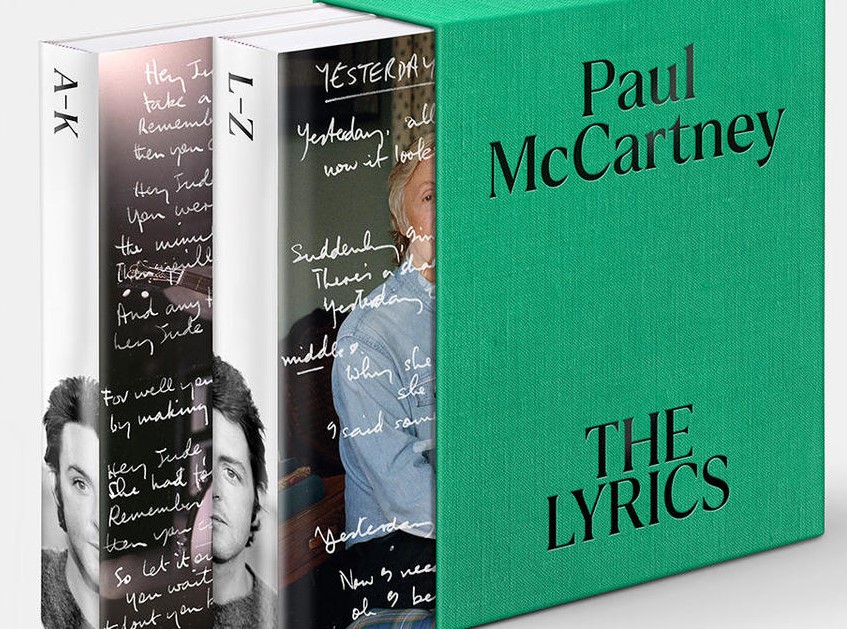 “Paul wrote 'Two Of Us' on one of those days,” Linda explains. “It's about us. We just pulled off in a wood somewhere and parked the car. I went off walking while Paul sat in the car and started writing. He also mentions the 'postcards' because we used to send a lot of postcards to each other.” In his book "The Lyrics," Paul adds: "The postcard sending does have a very literal feel, though. Whenever Linda and I went away, we would buy lots of postcards and send them to all our friends. John was also a great postcard sender, so you'd get some great stuff from him." Paul elsewhere recalled his early relationship with Linda by saying: “We'd just enjoy sitting out in nature. And this song was about that: doing nothing, trying to get lost. It's a favorite of mine because it reminds me of that period, getting together with Linda, and the wonderfully free attitude we were able to have. I had my guitar with me and I wrote it out on the road, and then maybe finished some of the verses at home later, but that picture is of me writing it.” “Paul wrote 'Two Of Us' on one of those days,” Linda explains. “It's about us. We just pulled off in a wood somewhere and parked the car. I went off walking while Paul sat in the car and started writing. He also mentions the 'postcards' because we used to send a lot of postcards to each other.” In his book "The Lyrics," Paul adds: "The postcard sending does have a very literal feel, though. Whenever Linda and I went away, we would buy lots of postcards and send them to all our friends. John was also a great postcard sender, so you'd get some great stuff from him." Paul elsewhere recalled his early relationship with Linda by saying: “We'd just enjoy sitting out in nature. And this song was about that: doing nothing, trying to get lost. It's a favorite of mine because it reminds me of that period, getting together with Linda, and the wonderfully free attitude we were able to have. I had my guitar with me and I wrote it out on the road, and then maybe finished some of the verses at home later, but that picture is of me writing it.”
 The picture Paul here mentions is one that Linda took of Paul actually writing the song “Two Of Us” in his car, “Paul with a day's growth of stubble, wearing a white open-necked shirt and his $10 thrift-shop herringbone coat, sitting half in the driver's seat, strumming his acoustic guitar,” as described by Barry Miles in “Many Years From Now.” Lyrically he refers to the “memories longer than the road that stretches out ahead,” as well as "riding nowhere," "Sunday driving" and "not arriving." The picture Paul here mentions is one that Linda took of Paul actually writing the song “Two Of Us” in his car, “Paul with a day's growth of stubble, wearing a white open-necked shirt and his $10 thrift-shop herringbone coat, sitting half in the driver's seat, strumming his acoustic guitar,” as described by Barry Miles in “Many Years From Now.” Lyrically he refers to the “memories longer than the road that stretches out ahead,” as well as "riding nowhere," "Sunday driving" and "not arriving."
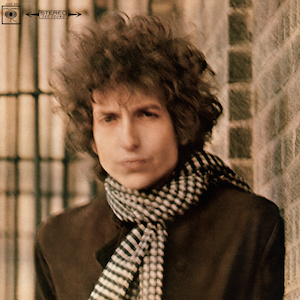 Regarding other lyircs in the song, Paul relates this in his book "The Lyrics": "There's a line that says, 'Spending someone's hard-earned pay.' I don't know where that came from or what it means. I don't necessarily want meaning. I don't root for meaning all the time. Sometimes it just feels right. I talked to Allen Ginsberg once about poetry and songs, and Allen told me about a conversation he'd had with Bob Dylan when he was trying to correct Dylan about the grammar of a lyric, and Dylan had said, 'This is a song; it's not a poem.' I know exactly what he means. Sometimes something just sings well. Take 'Spending someone's hard-earned pay.' It can't be 'spending someone's weekly pay packet.' You'd trip yourself up with those words." Regarding other lyircs in the song, Paul relates this in his book "The Lyrics": "There's a line that says, 'Spending someone's hard-earned pay.' I don't know where that came from or what it means. I don't necessarily want meaning. I don't root for meaning all the time. Sometimes it just feels right. I talked to Allen Ginsberg once about poetry and songs, and Allen told me about a conversation he'd had with Bob Dylan when he was trying to correct Dylan about the grammar of a lyric, and Dylan had said, 'This is a song; it's not a poem.' I know exactly what he means. Sometimes something just sings well. Take 'Spending someone's hard-earned pay.' It can't be 'spending someone's weekly pay packet.' You'd trip yourself up with those words."
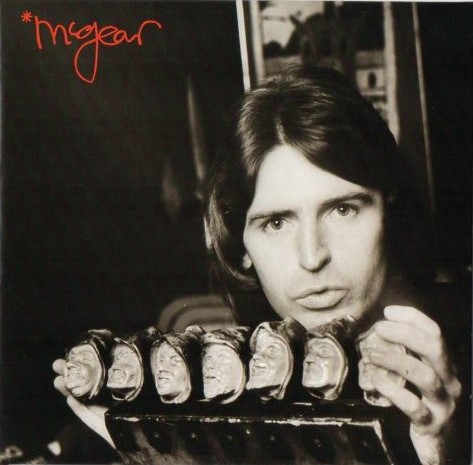 Paul continues: "Lying behind the phrase 'We're on our way home' is less the literal sense of going back to London, but more about trying to get in touch with the people we once were...Then there's 'You and me burning matches.' I remember there was a point, much earlier on, when we would light matches just for the hell of it. My brother (Michael McGear) and I were firebugs when we were kids, and my dad worried that we would burn the house down, so he made us light a whole box of matches till we got totally fed up of it." Paul continues: "Lying behind the phrase 'We're on our way home' is less the literal sense of going back to London, but more about trying to get in touch with the people we once were...Then there's 'You and me burning matches.' I remember there was a point, much earlier on, when we would light matches just for the hell of it. My brother (Michael McGear) and I were firebugs when we were kids, and my dad worried that we would burn the house down, so he made us light a whole box of matches till we got totally fed up of it."
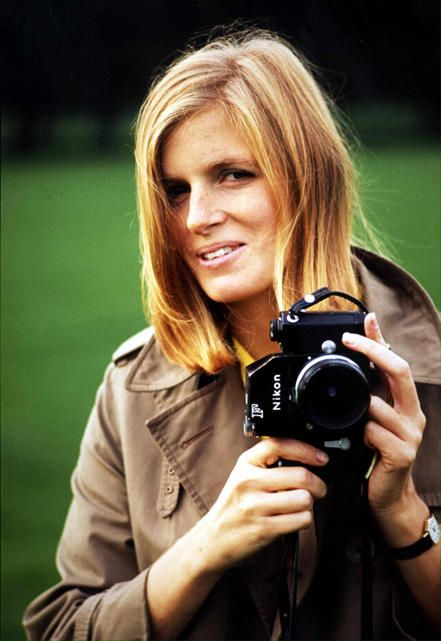 Intricate details of the specific drive Paul and Linda took that resulted in his composing “Two Of Us” is also detailed by Barry Miles. “They bundled Martha into the back seat and drove the Aston Martin out beyond Esher and Weybridge to the country near Cobham where the M25 motorway now rings London, picking up sandwiches on the way. They found a side road and drove down it, found another side road and tried to get as remote and away from it all as possible. They found a secluded spot to park near a wood and Linda got out to take some photographs.” Intricate details of the specific drive Paul and Linda took that resulted in his composing “Two Of Us” is also detailed by Barry Miles. “They bundled Martha into the back seat and drove the Aston Martin out beyond Esher and Weybridge to the country near Cobham where the M25 motorway now rings London, picking up sandwiches on the way. They found a side road and drove down it, found another side road and tried to get as remote and away from it all as possible. They found a secluded spot to park near a wood and Linda got out to take some photographs.”
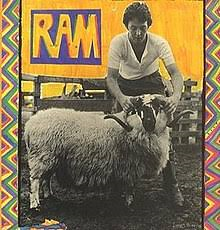 While in the glow of his new-found romance with Linda, Paul composed two other songs in the early months of 1969 which included similar lyrics, these being “The Back Seat Of My Car” (eventually included on he and Linda's 1971 “Ram” album) and “You Never Give Me Your Money" (featured on “Abbey Road”). “Two Of Us” appears to be the first song to be written with this subject matter, which apparently took place in late September of 1968. Although John did claim authorship of the song early on, he admitted it being entirely a McCartney composition during his Hit Parader Magazine interview that was published in February of 1972. Interestingly, even though Paul was the song's sole composer, his songwriting partnership with John was still of significance to him, this being evident on the bottom of his original lyric sheet for this song where he wrote "A Quarrymen Original," this being an affectionate nod to John's original skiffle band that Paul joined back in 1957 (see below). While in the glow of his new-found romance with Linda, Paul composed two other songs in the early months of 1969 which included similar lyrics, these being “The Back Seat Of My Car” (eventually included on he and Linda's 1971 “Ram” album) and “You Never Give Me Your Money" (featured on “Abbey Road”). “Two Of Us” appears to be the first song to be written with this subject matter, which apparently took place in late September of 1968. Although John did claim authorship of the song early on, he admitted it being entirely a McCartney composition during his Hit Parader Magazine interview that was published in February of 1972. Interestingly, even though Paul was the song's sole composer, his songwriting partnership with John was still of significance to him, this being evident on the bottom of his original lyric sheet for this song where he wrote "A Quarrymen Original," this being an affectionate nod to John's original skiffle band that Paul joined back in 1957 (see below).
Recording History
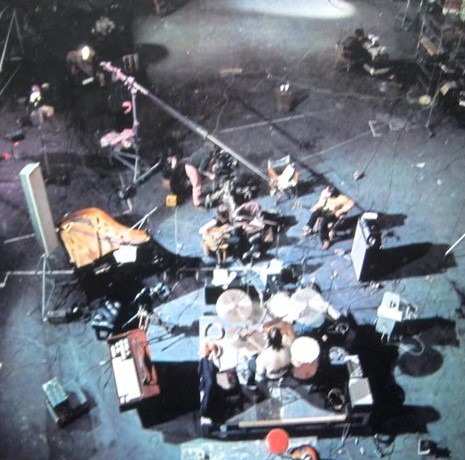 The first day that Paul introduced his song “Two Of Us” to the rest of the group, which according to Paul's lyric sheet was titled "Two Of Us (On Our Way Home)” at that point, was on January 2nd, 1969. This was their first day of filmed rehearsals at Twickenham Film Studios, the intention being to capture the group writing and rehearsing new material to be used for a live performance at a yet-to-be-decided-upon location. These filmed rehearsals, of course, comprised a good portion of what eventually became the “Let It Be” movie. The first day that Paul introduced his song “Two Of Us” to the rest of the group, which according to Paul's lyric sheet was titled "Two Of Us (On Our Way Home)” at that point, was on January 2nd, 1969. This was their first day of filmed rehearsals at Twickenham Film Studios, the intention being to capture the group writing and rehearsing new material to be used for a live performance at a yet-to-be-decided-upon location. These filmed rehearsals, of course, comprised a good portion of what eventually became the “Let It Be” movie.
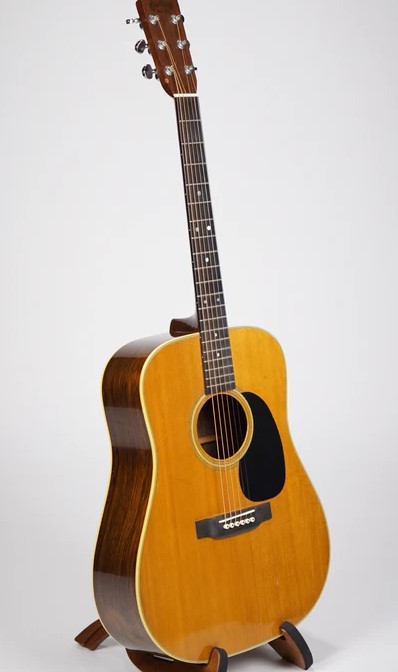 This first day began at approximately 11 am, Paul not arriving until around 12:30 because of being held up in traffic. Once he arrived, he led his bandmates through multiple rehearsals of “I've Got A Feeling” before they took a break for sandwiches. Afterwards, Paul spent the rest of the day introducing “Two Of Us” to them while playing acoustic guitar. They went through nine versions of the song, starting and stopping along the way in order for Paul to show them the chord and time-signature changes. This first day began at approximately 11 am, Paul not arriving until around 12:30 because of being held up in traffic. Once he arrived, he led his bandmates through multiple rehearsals of “I've Got A Feeling” before they took a break for sandwiches. Afterwards, Paul spent the rest of the day introducing “Two Of Us” to them while playing acoustic guitar. They went through nine versions of the song, starting and stopping along the way in order for Paul to show them the chord and time-signature changes.
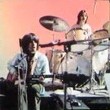 “It sort of, like, goes into a waltz, but you'll get the idea,” he states concerning the “on our way home” segments of the song. It took a good amount of instruction from Paul to direct them through these particular changes, John and George following on electric guitars with Ringo plodding away cautiously on drums. Paul sang lead throughout, George adding some harmonies and slight lead guitar lines periodically as he became more and more familiar with it. John eventually joined in on vocals too, Paul suggesting he should sing lead while the song's composer would harmonize with him throughout. Paul already had all the lyrics written at this time, and even suggested three-part harmonies in places, this being dropped later. “It sort of, like, goes into a waltz, but you'll get the idea,” he states concerning the “on our way home” segments of the song. It took a good amount of instruction from Paul to direct them through these particular changes, John and George following on electric guitars with Ringo plodding away cautiously on drums. Paul sang lead throughout, George adding some harmonies and slight lead guitar lines periodically as he became more and more familiar with it. John eventually joined in on vocals too, Paul suggesting he should sing lead while the song's composer would harmonize with him throughout. Paul already had all the lyrics written at this time, and even suggested three-part harmonies in places, this being dropped later.
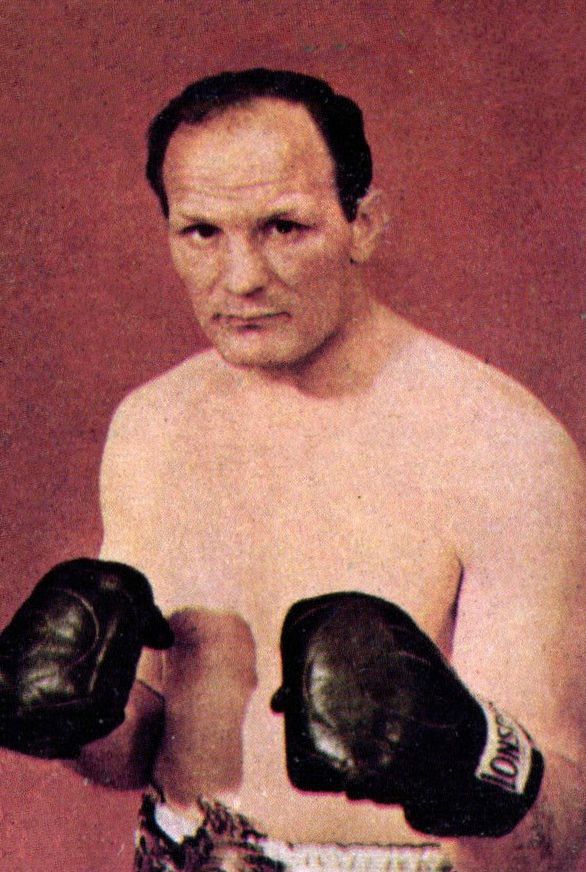 Paul also demonstrated an idea he had of performing what he called a “lightning middle-eight” for the second occurance of the bridge in the song, this running through the “you and I have memories...” lyrics twice as fast to shorten its length the second time around. He asked the others their opinion of this idea, which was eventually omitted. Humorously, Paul demonstrates the vocal line emphasis of the verses by repeatedly singing “Two of us, Henry Cooper,” referring to the British heavyweight boxer of that time. Paul switches to bass toward the end of the rehearsals as the chord changes become more ingrained in the minds of John and George, Ringo also catching on to the time-signature changes by this point. All said, The Beatles were beginning to get a good grasp of the structure of this new McCartney composition as the rehearsal ended for the day. Paul also demonstrated an idea he had of performing what he called a “lightning middle-eight” for the second occurance of the bridge in the song, this running through the “you and I have memories...” lyrics twice as fast to shorten its length the second time around. He asked the others their opinion of this idea, which was eventually omitted. Humorously, Paul demonstrates the vocal line emphasis of the verses by repeatedly singing “Two of us, Henry Cooper,” referring to the British heavyweight boxer of that time. Paul switches to bass toward the end of the rehearsals as the chord changes become more ingrained in the minds of John and George, Ringo also catching on to the time-signature changes by this point. All said, The Beatles were beginning to get a good grasp of the structure of this new McCartney composition as the rehearsal ended for the day.
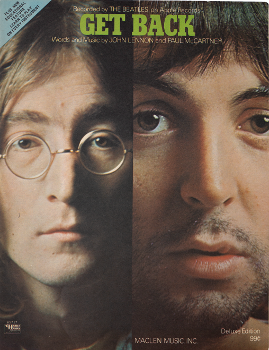 The following day, January 3rd, 1969, was not quite as productive as a whole, but they did run through “Two Of Us” once to reaquaint themselves with the progress they had made the day before. "Let's go through that one 'two of us on our way home' just before we have lunch," George suggested on this day, John adding "Lovely tune." Paul then related, "Glyn (Johns) was saying to do it on two acoustics," an idea they held off on throughout all of their rehearsals at Twickenham. After a weekend off, however, they met again at Twickenham for their January 6th session which saw the group work extensively on the song once again, playing it with the rhythmic feel that they would eventually use on the song "Get Back," although this song hadn't been written yet. They ran through twenty rehearsals of “Two Of Us” which, at this point, was arranged as a straight ahead rocker with electric guitars, as can be witnessed early in the “Let It Be” movie as filmed on this day. It was during the rehearsals of this song that tempers flared between George and Paul, the guitarist being told that his complicated guitar riffs need to be simplified, this interchange being included in the “Let It Be” film: The following day, January 3rd, 1969, was not quite as productive as a whole, but they did run through “Two Of Us” once to reaquaint themselves with the progress they had made the day before. "Let's go through that one 'two of us on our way home' just before we have lunch," George suggested on this day, John adding "Lovely tune." Paul then related, "Glyn (Johns) was saying to do it on two acoustics," an idea they held off on throughout all of their rehearsals at Twickenham. After a weekend off, however, they met again at Twickenham for their January 6th session which saw the group work extensively on the song once again, playing it with the rhythmic feel that they would eventually use on the song "Get Back," although this song hadn't been written yet. They ran through twenty rehearsals of “Two Of Us” which, at this point, was arranged as a straight ahead rocker with electric guitars, as can be witnessed early in the “Let It Be” movie as filmed on this day. It was during the rehearsals of this song that tempers flared between George and Paul, the guitarist being told that his complicated guitar riffs need to be simplified, this interchange being included in the “Let It Be” film:
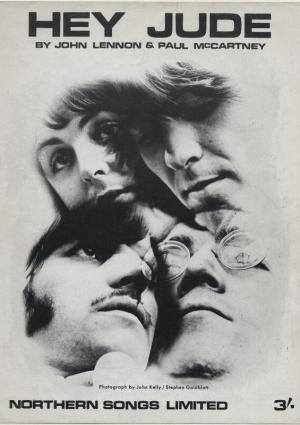 Paul: “I'm trying to help you, but I always hear as though I'm annoying you...I'm not trying to get ya. What I am really trying to just say is, 'Look lads, should we try this?...This one is like, 'Should we play guitar all through “Hey Jude”? Well, I don't think we should.” Paul: “I'm trying to help you, but I always hear as though I'm annoying you...I'm not trying to get ya. What I am really trying to just say is, 'Look lads, should we try this?...This one is like, 'Should we play guitar all through “Hey Jude”? Well, I don't think we should.”
George: "Yeah, OK, well I don't mind. I'll play, you know, whatever you want me to play, or I won't play at all if you don't want me to play. Whatever it is that will please you, I'll do it!"
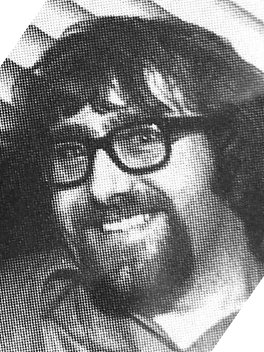 Other dialogue at this time includes George saying, "We can only play until we find the bit, or we can stop and say it's not together," to which Paul replied, "This is what we've been doing all afternoon and this is why we're not getting anything done...I think we do, like, waste - physically waste - a hell of a lot of time." Beatles' assistant Mal Evans writes in his diary, "George felt that Paul was encroaching on his contribution to Beatle recording sessions. In the past, each Beatle had added his own tasteful coloring to the recorded picture, but of late, Paul wanted George to paint by number, several times picking up his own electric guitar and saying, 'Play it like this.' To me, it was a put down on George's ability as a guitar player." Other dialogue at this time includes George saying, "We can only play until we find the bit, or we can stop and say it's not together," to which Paul replied, "This is what we've been doing all afternoon and this is why we're not getting anything done...I think we do, like, waste - physically waste - a hell of a lot of time." Beatles' assistant Mal Evans writes in his diary, "George felt that Paul was encroaching on his contribution to Beatle recording sessions. In the past, each Beatle had added his own tasteful coloring to the recorded picture, but of late, Paul wanted George to paint by number, several times picking up his own electric guitar and saying, 'Play it like this.' To me, it was a put down on George's ability as a guitar player."
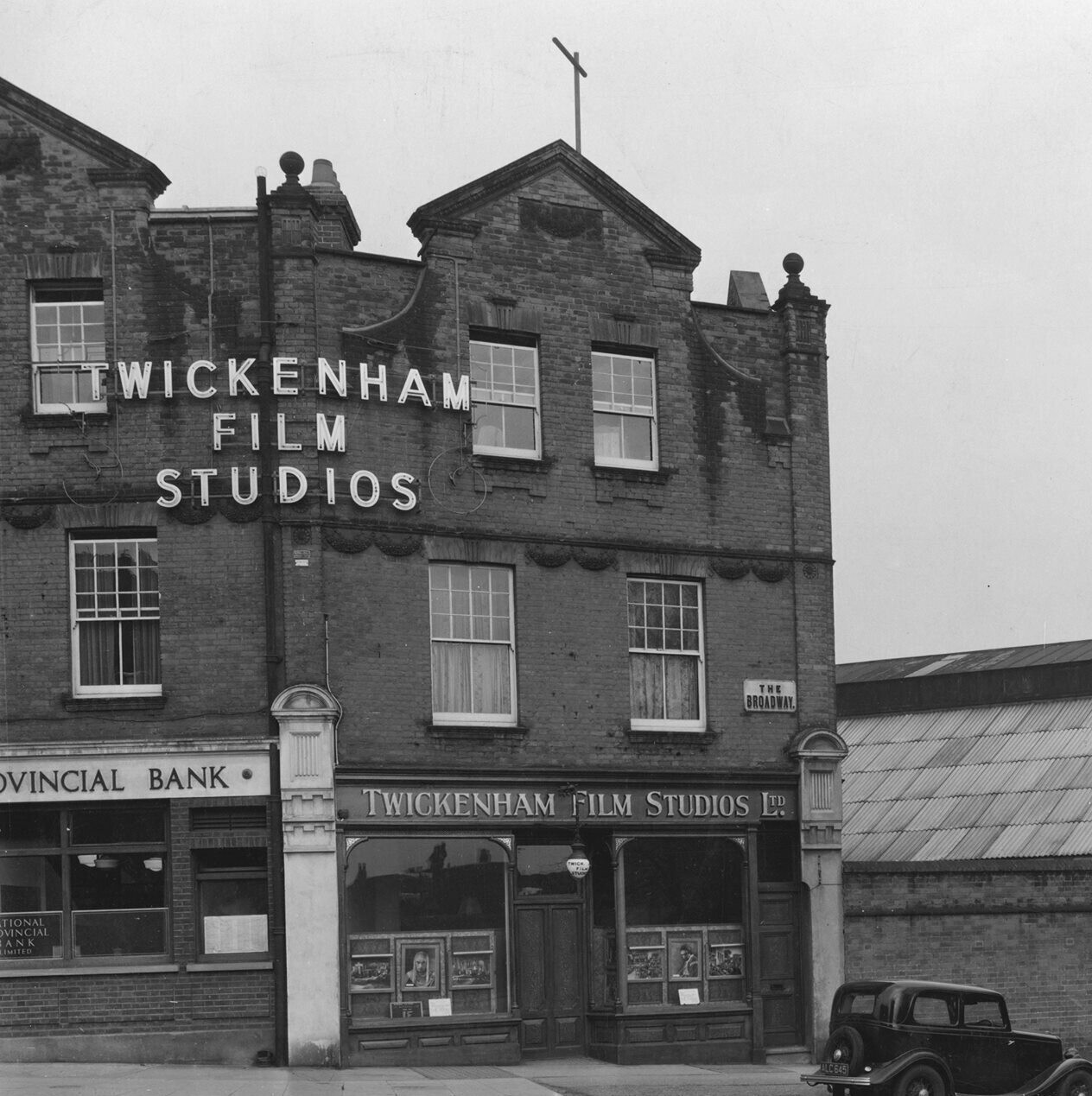 “Two Of Us” was touched on again briefly during their January 8th, 1969 rehearsal at Twickenham Film Studios, while eight versions of the song were rehearsed at the January 9th session, this still being arranged as an electric guitar rock song. Six run-throughs were also performed the following day, January 10th, 1969, with adjustments being made to the arrangement. "We've just got to do something about this middle eight," Paul complained, which prompted George's suggestion to "try shuffling it, the whole middle eight." The final rehearsal of the song that day was viewed as "the best so far" by George, although shortly afterward, during their lunch-break, George decided to quit The Beatles. His leaving, of course, turned out to be temporary, but the rest of this day was filled with half-hearted rehearsals and jam sessions by the three remaining Beatles, Yoko chiming in with vocal hijinks at times. “Two Of Us” was touched on again briefly during their January 8th, 1969 rehearsal at Twickenham Film Studios, while eight versions of the song were rehearsed at the January 9th session, this still being arranged as an electric guitar rock song. Six run-throughs were also performed the following day, January 10th, 1969, with adjustments being made to the arrangement. "We've just got to do something about this middle eight," Paul complained, which prompted George's suggestion to "try shuffling it, the whole middle eight." The final rehearsal of the song that day was viewed as "the best so far" by George, although shortly afterward, during their lunch-break, George decided to quit The Beatles. His leaving, of course, turned out to be temporary, but the rest of this day was filled with half-hearted rehearsals and jam sessions by the three remaining Beatles, Yoko chiming in with vocal hijinks at times.
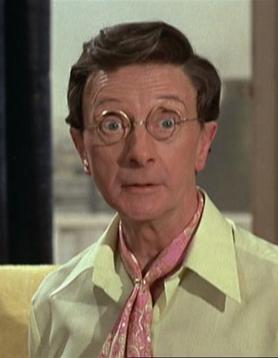 Of notable interest is the rehearsal session of January 21st, 1969, this marking the first day of the returning George Harrison. They changed locations for the rest of the January rehearsals, at George's insistence, from Twickenham Studios to their new Apple Studios basement in Savile Row, London. Although “Two Of Us” was not rehearsed on this day, a noteworthy bit of Lennon dialog was. Before they ran through one of their 21 versions of John's song “Dig A Pony,” John stated, in a BBC announcer-like voice, “I Dig a Pigmy by Charles Hawtrey and the Deaf-aids...Phase one in which Doris gets her oats.” Bruce Spizer, in his book “The Beatles On Apple Records,” relates: “Charles Hawtrey was a British actor, and 'deaf-aids' is slang for hearing aids, although the group often used the term when referring to their amplifiers. 'Doris' pops up elsewhere during the sessions and may have been an inside joke (such as his "Doris Day" reference in the released version of the song "Dig It").” This dialog ended up being included on the released “Let It Be” album as the introduction to “Two Of Us,” presumably at Lennon's suggestion. Of notable interest is the rehearsal session of January 21st, 1969, this marking the first day of the returning George Harrison. They changed locations for the rest of the January rehearsals, at George's insistence, from Twickenham Studios to their new Apple Studios basement in Savile Row, London. Although “Two Of Us” was not rehearsed on this day, a noteworthy bit of Lennon dialog was. Before they ran through one of their 21 versions of John's song “Dig A Pony,” John stated, in a BBC announcer-like voice, “I Dig a Pigmy by Charles Hawtrey and the Deaf-aids...Phase one in which Doris gets her oats.” Bruce Spizer, in his book “The Beatles On Apple Records,” relates: “Charles Hawtrey was a British actor, and 'deaf-aids' is slang for hearing aids, although the group often used the term when referring to their amplifiers. 'Doris' pops up elsewhere during the sessions and may have been an inside joke (such as his "Doris Day" reference in the released version of the song "Dig It").” This dialog ended up being included on the released “Let It Be” album as the introduction to “Two Of Us,” presumably at Lennon's suggestion.
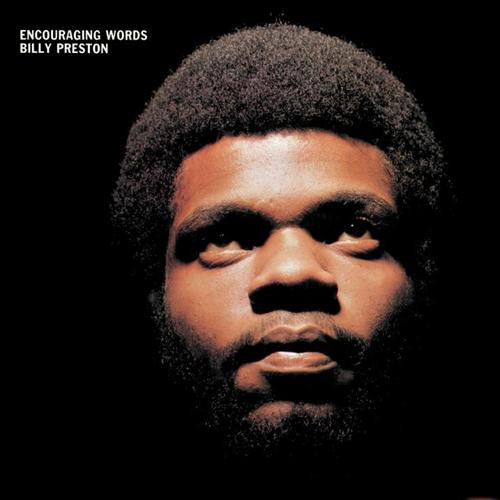 It took until January 23rd, 1969, for The Beatles to return to rehearsing “Two Of Us,” this also occuring in their Apple Studios in Savile Row. Although the recently recruited keyboardist Billy Preston was present on this day, the four Beatles ran through two renditions of the song without his participation. It took until January 23rd, 1969, for The Beatles to return to rehearsing “Two Of Us,” this also occuring in their Apple Studios in Savile Row. Although the recently recruited keyboardist Billy Preston was present on this day, the four Beatles ran through two renditions of the song without his participation.
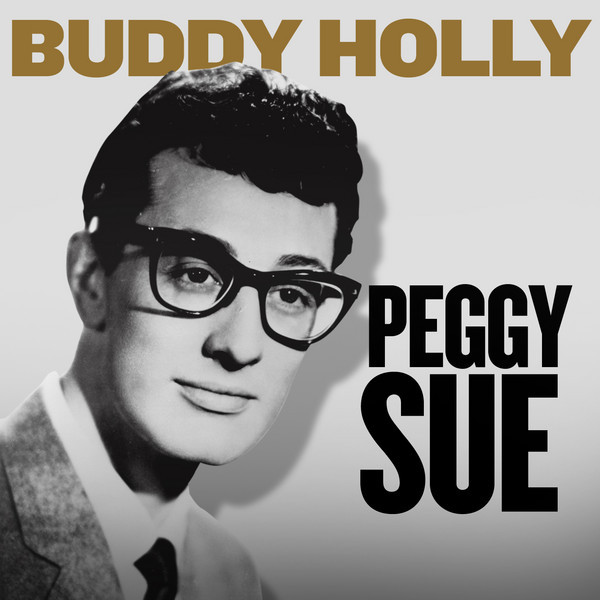 It was at the next session at Apple Studios, January 24th, 1969, that The Beatles decided on the acoustic guitar arrangement of “Two Of Us” as we've come to know it, this event being witnessed in Peter Jackson's 2021 "Get Back" series. Concerning their rocking electric guitar arrangement, John states, "I don't know, it's just we're all very stiff...but when I hear Stevie Wonder (doing it), I don't know what his backing would be, but then you'd sing it looser (demonstrates), maybe it's just soft." John and then Paul both switch to acoustic guitars to give that a try, Paul stating, "I'd like not to be playing bass on these ones because it's so silly, 'cause I wrote them on guitar, y'know, and it's just a bit like 'Peggy Sue.'" Ringo follows this suggestion by switching to tom beats as heard on this Buddy Holly classic. It was at the next session at Apple Studios, January 24th, 1969, that The Beatles decided on the acoustic guitar arrangement of “Two Of Us” as we've come to know it, this event being witnessed in Peter Jackson's 2021 "Get Back" series. Concerning their rocking electric guitar arrangement, John states, "I don't know, it's just we're all very stiff...but when I hear Stevie Wonder (doing it), I don't know what his backing would be, but then you'd sing it looser (demonstrates), maybe it's just soft." John and then Paul both switch to acoustic guitars to give that a try, Paul stating, "I'd like not to be playing bass on these ones because it's so silly, 'cause I wrote them on guitar, y'know, and it's just a bit like 'Peggy Sue.'" Ringo follows this suggestion by switching to tom beats as heard on this Buddy Holly classic.
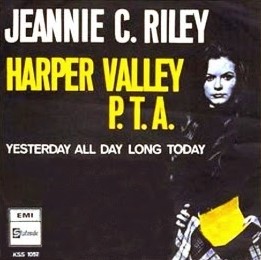 George adds that "it's a drag when there's no bass," to which Paul replies, "I quite like those ones where there isn't bass. We've done a few, (like) 'I'll Follow The Sun.' They've all tended to be that kind, but they're nice, y'know. They lose a big bottom, you know, but they gain a slim, lithe look." While Paul is saying this, George begins composing a bass guitar melody line on his Rosewood Telecaster. They made 21 run-throughs of the song on this day, the first try prompting John to sing "Desmond had a barrow..." from "Ob-La-Di, Ob-La-Da," another attempt being vocalized as "You and me, PTA, Harp Bazaar," undoubtedly inspired by both the recent hit "Harper Valley PTA" and the long-running American woman's fashion magazine "Harper's Bazaar." Only three of their performances were officially recorded on this day, after which George responds, "It sounds lovely, that, now, after all the anguish we went through with it...Put it on the b-side (of 'Get Back')." John replies, "Release it in Italy only...Let's just make a different single for every country." Interestingly, headphones were not used for these recordings, PA speakers being utilized for them to hear themselves, this resulting in occasional feedback. George adds that "it's a drag when there's no bass," to which Paul replies, "I quite like those ones where there isn't bass. We've done a few, (like) 'I'll Follow The Sun.' They've all tended to be that kind, but they're nice, y'know. They lose a big bottom, you know, but they gain a slim, lithe look." While Paul is saying this, George begins composing a bass guitar melody line on his Rosewood Telecaster. They made 21 run-throughs of the song on this day, the first try prompting John to sing "Desmond had a barrow..." from "Ob-La-Di, Ob-La-Da," another attempt being vocalized as "You and me, PTA, Harp Bazaar," undoubtedly inspired by both the recent hit "Harper Valley PTA" and the long-running American woman's fashion magazine "Harper's Bazaar." Only three of their performances were officially recorded on this day, after which George responds, "It sounds lovely, that, now, after all the anguish we went through with it...Put it on the b-side (of 'Get Back')." John replies, "Release it in Italy only...Let's just make a different single for every country." Interestingly, headphones were not used for these recordings, PA speakers being utilized for them to hear themselves, this resulting in occasional feedback.
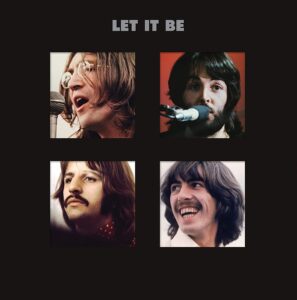 Their first recording on this day was released on the 1996 compilation album “Anthology 3,” which features the opening mumblings about John playing an introductory three-note figure on guitar at designated places in the song: John: “OK, what is there...you'll hear it, yeah.” Paul: “Just the first occasion you get.” John: “I did with my thumb.” Just before the third verse is sung, Paul exclaims to John, “Take it Phil,” in reference to the Everly Brothers-like arrangement they had chosen for the song. The second complete version of the song, which is included in various Anniversary editions of the "Let It Be" album, features John occasionally singing with an American twang in his voice. "I was Phil Dylan in that one," he joked afterward. The final complete version of “Two Of Us” recorded on this day, which closes with Paul's statement “and so we leave the little town of London, England” in reference to him and Linda's long drives to "get lost," was chosen by engineer Glyn Johns for inclusion on his first attempt at putting together a “Get Back” album. Their first recording on this day was released on the 1996 compilation album “Anthology 3,” which features the opening mumblings about John playing an introductory three-note figure on guitar at designated places in the song: John: “OK, what is there...you'll hear it, yeah.” Paul: “Just the first occasion you get.” John: “I did with my thumb.” Just before the third verse is sung, Paul exclaims to John, “Take it Phil,” in reference to the Everly Brothers-like arrangement they had chosen for the song. The second complete version of the song, which is included in various Anniversary editions of the "Let It Be" album, features John occasionally singing with an American twang in his voice. "I was Phil Dylan in that one," he joked afterward. The final complete version of “Two Of Us” recorded on this day, which closes with Paul's statement “and so we leave the little town of London, England” in reference to him and Linda's long drives to "get lost," was chosen by engineer Glyn Johns for inclusion on his first attempt at putting together a “Get Back” album.
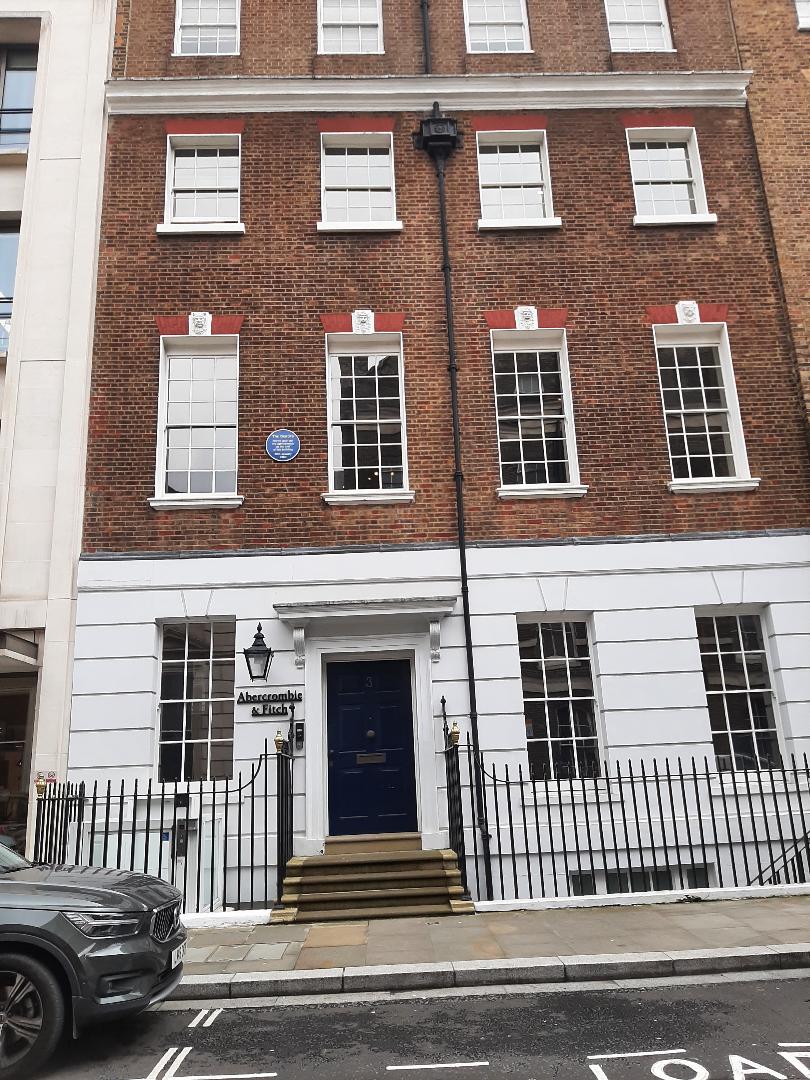 On the next day's Apple Studios session, January 25th, 1969, after running through an excellent harmonized rendition of the 1957 Everly Brothers hit "Bye Bye Love," The Beatles begin rehearsing "Two Of Us" in the new Everly arrangement they had decided upon the day before. After working hard at developing Paul and John harmonies for the bridge, this idea being dropped quickly thereafter, the band goes through the song seven times in a more relaxed way. Sometimes they would take on exagerated German, French, Scottish or Jamaican accents, other times they would impersonate Bob Dylan or Peter Sellers' character Inspector Clouseau (...on our way hame / we're going hame!) , not to mention incorporating humorous vocal sound effects such as rolling their "r"s. They obviously had the song well rehearsed by this time, being somewhat confident in their officially recorded takes from the previous day, but were blowing off steam by having some fun. The old John and Paul comaraderie was back, something they hadn't enjoyed throughout the entire "White Album" experience. On the next day's Apple Studios session, January 25th, 1969, after running through an excellent harmonized rendition of the 1957 Everly Brothers hit "Bye Bye Love," The Beatles begin rehearsing "Two Of Us" in the new Everly arrangement they had decided upon the day before. After working hard at developing Paul and John harmonies for the bridge, this idea being dropped quickly thereafter, the band goes through the song seven times in a more relaxed way. Sometimes they would take on exagerated German, French, Scottish or Jamaican accents, other times they would impersonate Bob Dylan or Peter Sellers' character Inspector Clouseau (...on our way hame / we're going hame!) , not to mention incorporating humorous vocal sound effects such as rolling their "r"s. They obviously had the song well rehearsed by this time, being somewhat confident in their officially recorded takes from the previous day, but were blowing off steam by having some fun. The old John and Paul comaraderie was back, something they hadn't enjoyed throughout the entire "White Album" experience.
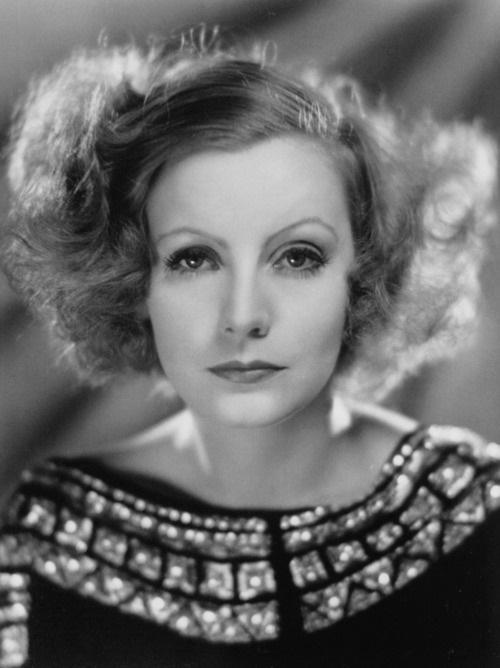 Their January 26th, 1969 Apple Studios session saw them touch on “Two Of Us” once, and then five more times at their January 28th session. Three more run-throughs of the song occurred on January 29th, 1969, which was the day that they decided to perform what became their final live appearance as a band on the rooftop of their Apple building the following day. One humorous rendition, as seen in Peter Jackson's "Get Back" series, was performed with both Paul and John singing through smiling clenched teeth throughout, the song concluding with Paul reciting the alphabet and John repeating "Greta Garbo" through smiling gritted teeth. Interestingly, it can be said that, as of this day, the song finally shed its working title “On Our Way Home” since, as included in an impromptu jam called “Dig It,” John recites the title of as many of their new compositions as he can think of, referring twice to Paul's composition as "Two Of Us." Their January 26th, 1969 Apple Studios session saw them touch on “Two Of Us” once, and then five more times at their January 28th session. Three more run-throughs of the song occurred on January 29th, 1969, which was the day that they decided to perform what became their final live appearance as a band on the rooftop of their Apple building the following day. One humorous rendition, as seen in Peter Jackson's "Get Back" series, was performed with both Paul and John singing through smiling clenched teeth throughout, the song concluding with Paul reciting the alphabet and John repeating "Greta Garbo" through smiling gritted teeth. Interestingly, it can be said that, as of this day, the song finally shed its working title “On Our Way Home” since, as included in an impromptu jam called “Dig It,” John recites the title of as many of their new compositions as he can think of, referring twice to Paul's composition as "Two Of Us."
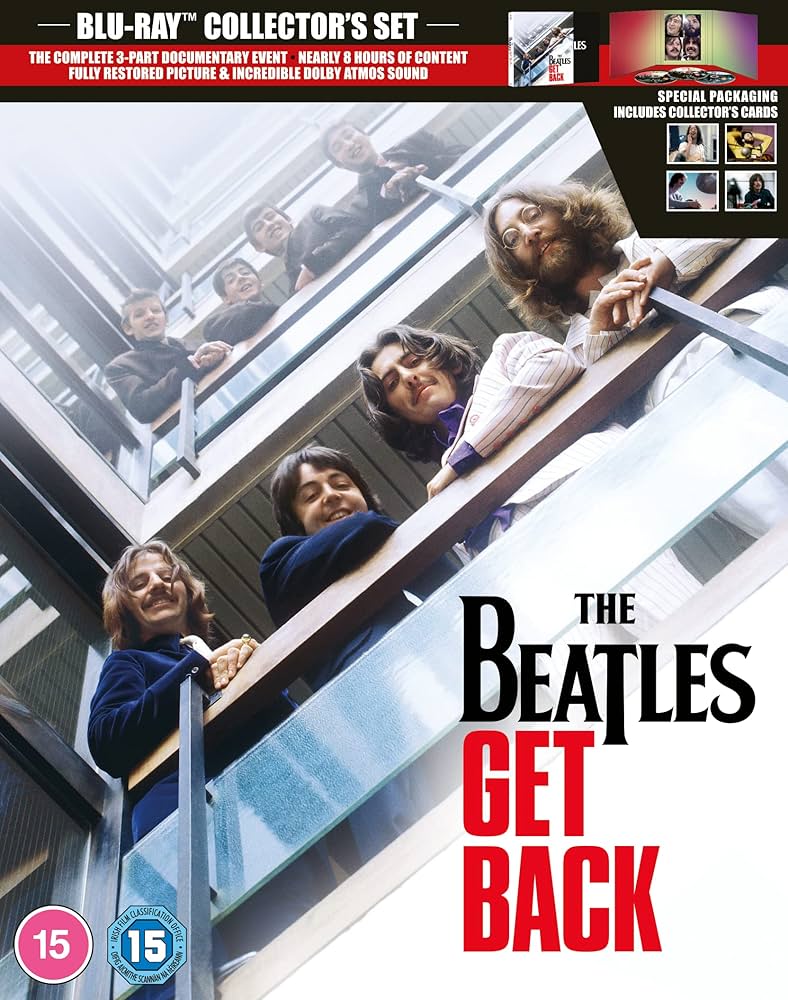 Of interest here is a conversation among The Beatles in the control room of Apple Studios on January 30th, 1969, as seen in Peter Jackson's "Get Back" documentary series. Concerning the idea of performing "Two Of Us" and the other songs not performed on the roof in their basement studio afterwards, George suggested, "We could pretend in the film that we had to get down because of (the police) and then here we are!” Of interest here is a conversation among The Beatles in the control room of Apple Studios on January 30th, 1969, as seen in Peter Jackson's "Get Back" documentary series. Concerning the idea of performing "Two Of Us" and the other songs not performed on the roof in their basement studio afterwards, George suggested, "We could pretend in the film that we had to get down because of (the police) and then here we are!”
 On January 31st, 1969, the day after their famous rooftop concert, The Beatles worked at perfecting three songs deemed unsuitable for the roof before the film crew and studio engineers, this day's performances described as “Apple Studio Performance” on the tape boxes. The first of these songs, “Two Of Us,” was filmed and recorded seven times, after which was recorded various cover songs to wind down before they began work on perfecting “Let It Be” and “The Long And Winding Road” for the cameras. Mark Lewisohn, in his book “The Beatles Recording Sessions,” indicates that “take 12” of "Two Of Us" was chosen for the “Let It Be” album, indicating that there may have been some performances on this day that were breakdowns, not making it to the conclusion of the song. Also of note here is John whistling the coda to “Hello Goodbye” at the song's conclusion, a 1967 Beatles recording that contains a similar conclusion after a 'Beatles break.' On January 31st, 1969, the day after their famous rooftop concert, The Beatles worked at perfecting three songs deemed unsuitable for the roof before the film crew and studio engineers, this day's performances described as “Apple Studio Performance” on the tape boxes. The first of these songs, “Two Of Us,” was filmed and recorded seven times, after which was recorded various cover songs to wind down before they began work on perfecting “Let It Be” and “The Long And Winding Road” for the cameras. Mark Lewisohn, in his book “The Beatles Recording Sessions,” indicates that “take 12” of "Two Of Us" was chosen for the “Let It Be” album, indicating that there may have been some performances on this day that were breakdowns, not making it to the conclusion of the song. Also of note here is John whistling the coda to “Hello Goodbye” at the song's conclusion, a 1967 Beatles recording that contains a similar conclusion after a 'Beatles break.'
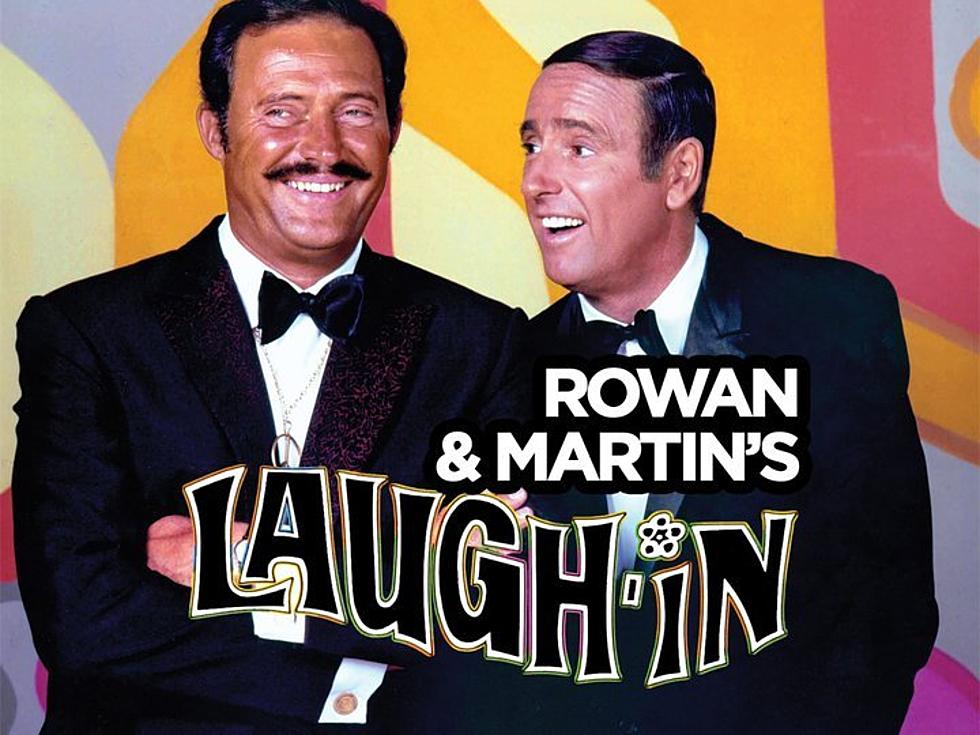 Something of interest during the recording of this song on this day that was caught on camera and seen on Peter Jackson's "Get Back" series was a bit of dialogue between Paul and John that mimicked the closing monologue of the early episodes of "Rowan & Martin's Laugh In," their current favorite television show. As Dan Rowan would try to conclude the show, Dick Martin would interject a story about a relative of his that Dan did not want to hear, this bit always concluding with him saying, "Say goodnight, Dick," to which Dick would respond, "Goodnight, Dick!" In imitation of this, Paul states, "Did I ever tell you about...," to which John interjects, "I don't think I want to hear that, Dick! Ok, Jim. Goodnight Paul!" Paul responds with, "Goodnight, John" and then shortly thereafter delivers the official version of the song as we know it today, followed by John's realization that his guitar needs tuning. While playing guitar, John sings, "I suddenly discovered I was half way out of tune / but I continue playing because I'm no goon." Something of interest during the recording of this song on this day that was caught on camera and seen on Peter Jackson's "Get Back" series was a bit of dialogue between Paul and John that mimicked the closing monologue of the early episodes of "Rowan & Martin's Laugh In," their current favorite television show. As Dan Rowan would try to conclude the show, Dick Martin would interject a story about a relative of his that Dan did not want to hear, this bit always concluding with him saying, "Say goodnight, Dick," to which Dick would respond, "Goodnight, Dick!" In imitation of this, Paul states, "Did I ever tell you about...," to which John interjects, "I don't think I want to hear that, Dick! Ok, Jim. Goodnight Paul!" Paul responds with, "Goodnight, John" and then shortly thereafter delivers the official version of the song as we know it today, followed by John's realization that his guitar needs tuning. While playing guitar, John sings, "I suddenly discovered I was half way out of tune / but I continue playing because I'm no goon."
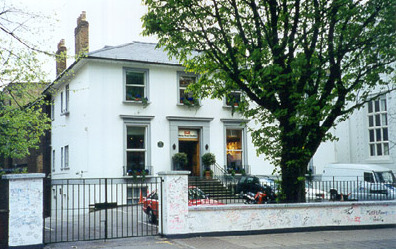 Sometime in early March of 1969, John and Paul called a meeting with engineer Glyn Johns at EMI Studios. The purpose of the meeting was to delegate to Glyn Johns the job of compiling the next Beatles album. Legend has it that the two Beatles pointed to a big pile of eight-track tapes from the ten days in January that they recorded at Apple Studios in Savile Row and said to Johns: “Remember that idea you had about putting together an album? There are the tapes, go and do it!” Sometime in early March of 1969, John and Paul called a meeting with engineer Glyn Johns at EMI Studios. The purpose of the meeting was to delegate to Glyn Johns the job of compiling the next Beatles album. Legend has it that the two Beatles pointed to a big pile of eight-track tapes from the ten days in January that they recorded at Apple Studios in Savile Row and said to Johns: “Remember that idea you had about putting together an album? There are the tapes, go and do it!”
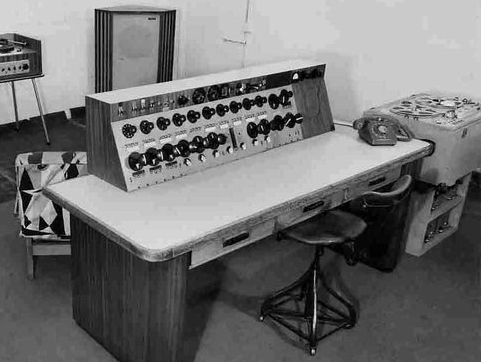 With this arduous task at hand, Johns booked time at Olympic Sound Studios in London and began preparing stereo mixes of versions of the songs found on those tapes. Still identifying the song as “On Our Way Home,” Johns worked at perfecting a stereo mix of “Two Of Us” on both March 10th and 11th, 1969, hand-picking a version of the song he favored as recorded on January 24th, 1969. It has been proposed that George Martin was present at these mixing sessions, although this has not been confirmed. With this arduous task at hand, Johns booked time at Olympic Sound Studios in London and began preparing stereo mixes of versions of the songs found on those tapes. Still identifying the song as “On Our Way Home,” Johns worked at perfecting a stereo mix of “Two Of Us” on both March 10th and 11th, 1969, hand-picking a version of the song he favored as recorded on January 24th, 1969. It has been proposed that George Martin was present at these mixing sessions, although this has not been confirmed.
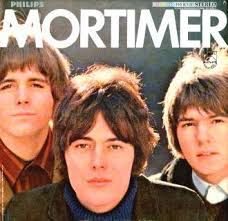 With the Apple Records label picking up steam, Paul decided to present the song “Two Of Us” to a New York trio named Mortimer, who were recently signed to Apple, as a contender for them to record and release. In order for them to become acquainted with the song, he arranged for engineers Peter Mew and Chris Blair to prepare a mono mix of The Beatles' recording of “Two Of Us” in Abbey Road, Room 4, on April 25th, 1969 between 11:30 am and 12:30 pm. An acetate disc was cut of this mix for Paul to give to the group, which they were to record for release by the end of June. The song was recorded by Mortimer under the name "On Our Way Home" but its release did not materialize, however, due to Allen Klein cutbacks at Apple Records intended to save the company from losing money. With the Apple Records label picking up steam, Paul decided to present the song “Two Of Us” to a New York trio named Mortimer, who were recently signed to Apple, as a contender for them to record and release. In order for them to become acquainted with the song, he arranged for engineers Peter Mew and Chris Blair to prepare a mono mix of The Beatles' recording of “Two Of Us” in Abbey Road, Room 4, on April 25th, 1969 between 11:30 am and 12:30 pm. An acetate disc was cut of this mix for Paul to give to the group, which they were to record for release by the end of June. The song was recorded by Mortimer under the name "On Our Way Home" but its release did not materialize, however, due to Allen Klein cutbacks at Apple Records intended to save the company from losing money.
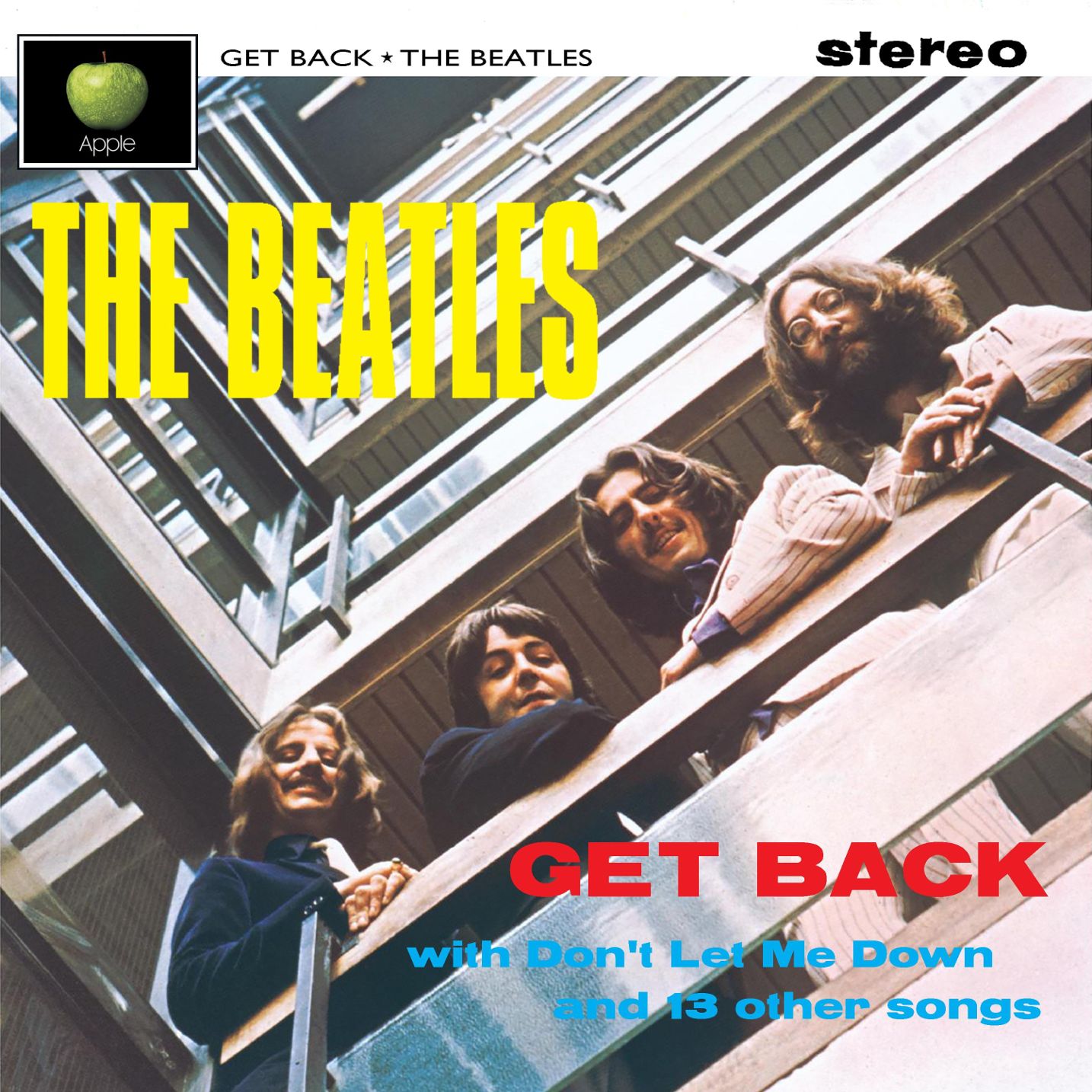 On May 28th, 1969, George Martin and engineers Glyn Johns and Steve Vaughan met at Olympic Sound Studios to perform the master tape banding and compilation for what was proposed to be the “Get Back” album. “Two Of Us” was delegated as the third song on side two, directly following a rough demo version of a McCartney composition entitled “Teddy Boy.” George Harrison was the only Beatle available in town at the time to approve this album, but it was repeatedly delayed and ultimately didn't see a commercial release. On May 28th, 1969, George Martin and engineers Glyn Johns and Steve Vaughan met at Olympic Sound Studios to perform the master tape banding and compilation for what was proposed to be the “Get Back” album. “Two Of Us” was delegated as the third song on side two, directly following a rough demo version of a McCartney composition entitled “Teddy Boy.” George Harrison was the only Beatle available in town at the time to approve this album, but it was repeatedly delayed and ultimately didn't see a commercial release.
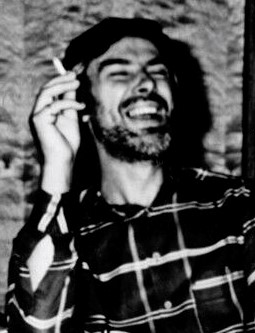 On January 5th, 1970, Glyn Johns booked yet more time at Studio One of Olympic Sound Studios to compile a second master tape banding and compilation of a new “Get Back” album. This time around, the same stereo mix of “Two Of Us” that he had prepared for the previous attempt at a “Get Back” album was placed as the second track of side two, following directly after George's song “For You Blue.” This, however, suffered the same fate as his earlier attempt at a Beatles album, the project once again delayed before being shelved. Also, it rubbed John Lennon the wrong way that Glyn Johns was requesting a producer's credit for the album, even in an unpaid capacity. On January 5th, 1970, Glyn Johns booked yet more time at Studio One of Olympic Sound Studios to compile a second master tape banding and compilation of a new “Get Back” album. This time around, the same stereo mix of “Two Of Us” that he had prepared for the previous attempt at a “Get Back” album was placed as the second track of side two, following directly after George's song “For You Blue.” This, however, suffered the same fate as his earlier attempt at a Beatles album, the project once again delayed before being shelved. Also, it rubbed John Lennon the wrong way that Glyn Johns was requesting a producer's credit for the album, even in an unpaid capacity.
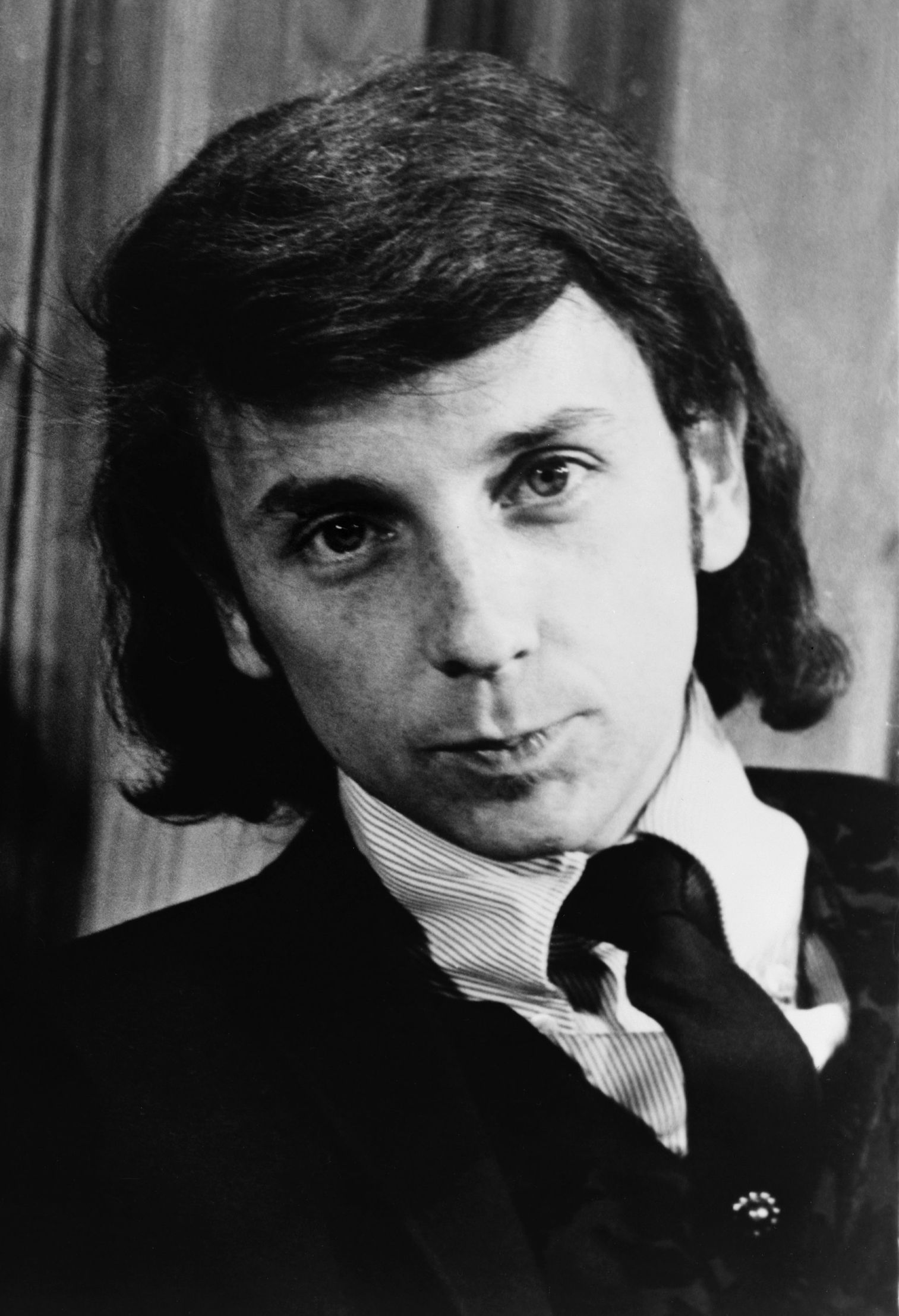 As a remedy to this problem, John and George Harrison recruited their new friend and established producer Phil Spector to oversee the production of the album, newly titled “Let It Be.” Spector, along with engineers Peter Bown and Roger Ferris, entered Room 4 of Abbey Road Studios to create a new stereo mix of “Two Of Us” on March 25th, 1970. After Phil Spector saw an advance of the movie, which included the January 31st, 1969 filmed version of “Two Of Us,” he decided to incorporate a performance of the song from this day onto the album instead of the January 24th, 1969 recording that Glyn Johns proposed using on the aborted “Get Back” albums. Two tries at getting a good stereo mix of the song were done on this day, the crisp and brightly produced second attempt being deemed the best. It was on March 27th, 1970, also in Room 4 at EMI Studios, that Spector added John's “I Dig a Pygmy...” dialog to the beginning of “Two Of Us” to start off the album, engineers Mike Sheady and Roger Ferris assisting in this endeavor. As a remedy to this problem, John and George Harrison recruited their new friend and established producer Phil Spector to oversee the production of the album, newly titled “Let It Be.” Spector, along with engineers Peter Bown and Roger Ferris, entered Room 4 of Abbey Road Studios to create a new stereo mix of “Two Of Us” on March 25th, 1970. After Phil Spector saw an advance of the movie, which included the January 31st, 1969 filmed version of “Two Of Us,” he decided to incorporate a performance of the song from this day onto the album instead of the January 24th, 1969 recording that Glyn Johns proposed using on the aborted “Get Back” albums. Two tries at getting a good stereo mix of the song were done on this day, the crisp and brightly produced second attempt being deemed the best. It was on March 27th, 1970, also in Room 4 at EMI Studios, that Spector added John's “I Dig a Pygmy...” dialog to the beginning of “Two Of Us” to start off the album, engineers Mike Sheady and Roger Ferris assisting in this endeavor.
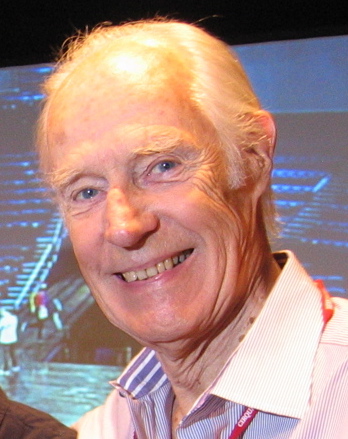 It was sometime in 1996 that George Martin and engineer Geoff Emerick returned to the January 24th, 1969 master tapes of “Two Of Us” to create a stereo mix of one of the takes for inclusion on the compilation album “Anthology 3.” Then, sometime in 2003, the production team of Paul Hicks, Guy Massey and Allan Rouse pulled out the master tape of “take 12” of the song as recorded on January 31st, 1969 to create an even cleaner sounding stereo mix for inclusion on the album “Let It Be...Naked," this mix digitally correcting an acoustic guitar mistake by John. They also created a quick mix of a few concluding seconds of an unknown take of "Two Of Us" for inclusion on the "Fly On The Wall" disc that accompanied the "Let It Be...Naked" album. This conclusion featured John's whistling which, instead of "Hello Goodbye," resembled the likes of "Turkey In The Straw." It was sometime in 1996 that George Martin and engineer Geoff Emerick returned to the January 24th, 1969 master tapes of “Two Of Us” to create a stereo mix of one of the takes for inclusion on the compilation album “Anthology 3.” Then, sometime in 2003, the production team of Paul Hicks, Guy Massey and Allan Rouse pulled out the master tape of “take 12” of the song as recorded on January 31st, 1969 to create an even cleaner sounding stereo mix for inclusion on the album “Let It Be...Naked," this mix digitally correcting an acoustic guitar mistake by John. They also created a quick mix of a few concluding seconds of an unknown take of "Two Of Us" for inclusion on the "Fly On The Wall" disc that accompanied the "Let It Be...Naked" album. This conclusion featured John's whistling which, instead of "Hello Goodbye," resembled the likes of "Turkey In The Straw."
 Sometime in 2021, Giles Martin and engineer Sam Okell returned to the master tapes of "Two Of Us" to create a new mix for inclusion on an Anniversary version of the "Let It Be" album available in various editions. They also created a stereo mix for "take four" of the song as recorded at Apple Studios on January 24th, 1969, "take five" from this day as originally included on the proposed Glyn Johns "Get Back" album from 1969 being remastered at this time. Sometime in 2021, Giles Martin and engineer Sam Okell returned to the master tapes of "Two Of Us" to create a new mix for inclusion on an Anniversary version of the "Let It Be" album available in various editions. They also created a stereo mix for "take four" of the song as recorded at Apple Studios on January 24th, 1969, "take five" from this day as originally included on the proposed Glyn Johns "Get Back" album from 1969 being remastered at this time.
Song Structure and Style
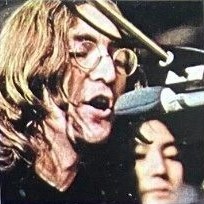 After a humorous spoken word introduction from John Lennon, the structure of “Two Of Us” consists of 'intro/ verse/ intro/ verse/ bridge/ verse/ bridge/ verse/ intro' (or ababcbcba). While the standard 'verse/ verse/ bridge/ verse/ bridge/ verse' (aababa) is repeated here, as it is in a good portion of The Beatles' catalog, the introductory element of this song, identified here as 'intro,' appears three times, even acting as the conclusion. Also unique here is that in each of the three times it occurs it is preceded by silence, either at the beginning of the song or after a 'Beatles break.' After a humorous spoken word introduction from John Lennon, the structure of “Two Of Us” consists of 'intro/ verse/ intro/ verse/ bridge/ verse/ bridge/ verse/ intro' (or ababcbcba). While the standard 'verse/ verse/ bridge/ verse/ bridge/ verse' (aababa) is repeated here, as it is in a good portion of The Beatles' catalog, the introductory element of this song, identified here as 'intro,' appears three times, even acting as the conclusion. Also unique here is that in each of the three times it occurs it is preceded by silence, either at the beginning of the song or after a 'Beatles break.'
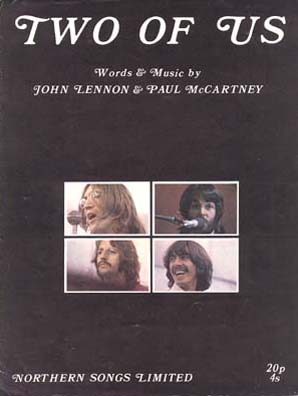 The intro is four measures long, featuring Paul's repeating octave-alternating acoustic guitar figure as the focal point throughout. Ringo enters the picture in measure two by tapping out quarter beats on his kick drum, John adding an ascending three-note riff as this measure concludes before his simple acoustic guitar strumming fills the remaining measures. Also heard in measures three and four is George playing a descending bass line on his electric guitar (measure three) and then an ascending one (measure four) while Ringo plods away on his floor tom which has been dampened with a tea towel. The intro is four measures long, featuring Paul's repeating octave-alternating acoustic guitar figure as the focal point throughout. Ringo enters the picture in measure two by tapping out quarter beats on his kick drum, John adding an ascending three-note riff as this measure concludes before his simple acoustic guitar strumming fills the remaining measures. Also heard in measures three and four is George playing a descending bass line on his electric guitar (measure three) and then an ascending one (measure four) while Ringo plods away on his floor tom which has been dampened with a tea towel.
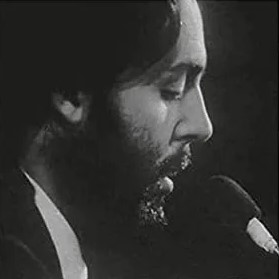 Next comes the fifteen-measure verse, which demonstrates that “Two Of Us” wins the award of being the Beatles song containing the most time-signature changes. While the song is predominantly in 4/4 throughout, the verse jumps into 6/4, 3/4 and 2/4 as well. The first measure is in 4/4, but the second measure is in 6/4, extending through the lyric “nowhere / spending someone's.” Then comes three more measures of 4/4 followed by another 6/4 measure (“driving / not arriving”) before returning for two more 4/4 measures. Then we go into 3/4 time for five measures, or “into a waltz,” as Paul explained to the others when he was introducing the song to them. Then comes a quick 2/4 measure during the lyric “we're going,” before one final 4/4 measure on the word “home,” which also comprises a 'Beatles break' that stops the song dead in its tracks. If we've grown up with the song, it has become 'second nature' for us to assimilate all of these changes, but for someone who may be be hearing it for the first time and possibly learning to play it on guitar, it may take a while to figure out. Next comes the fifteen-measure verse, which demonstrates that “Two Of Us” wins the award of being the Beatles song containing the most time-signature changes. While the song is predominantly in 4/4 throughout, the verse jumps into 6/4, 3/4 and 2/4 as well. The first measure is in 4/4, but the second measure is in 6/4, extending through the lyric “nowhere / spending someone's.” Then comes three more measures of 4/4 followed by another 6/4 measure (“driving / not arriving”) before returning for two more 4/4 measures. Then we go into 3/4 time for five measures, or “into a waltz,” as Paul explained to the others when he was introducing the song to them. Then comes a quick 2/4 measure during the lyric “we're going,” before one final 4/4 measure on the word “home,” which also comprises a 'Beatles break' that stops the song dead in its tracks. If we've grown up with the song, it has become 'second nature' for us to assimilate all of these changes, but for someone who may be be hearing it for the first time and possibly learning to play it on guitar, it may take a while to figure out.
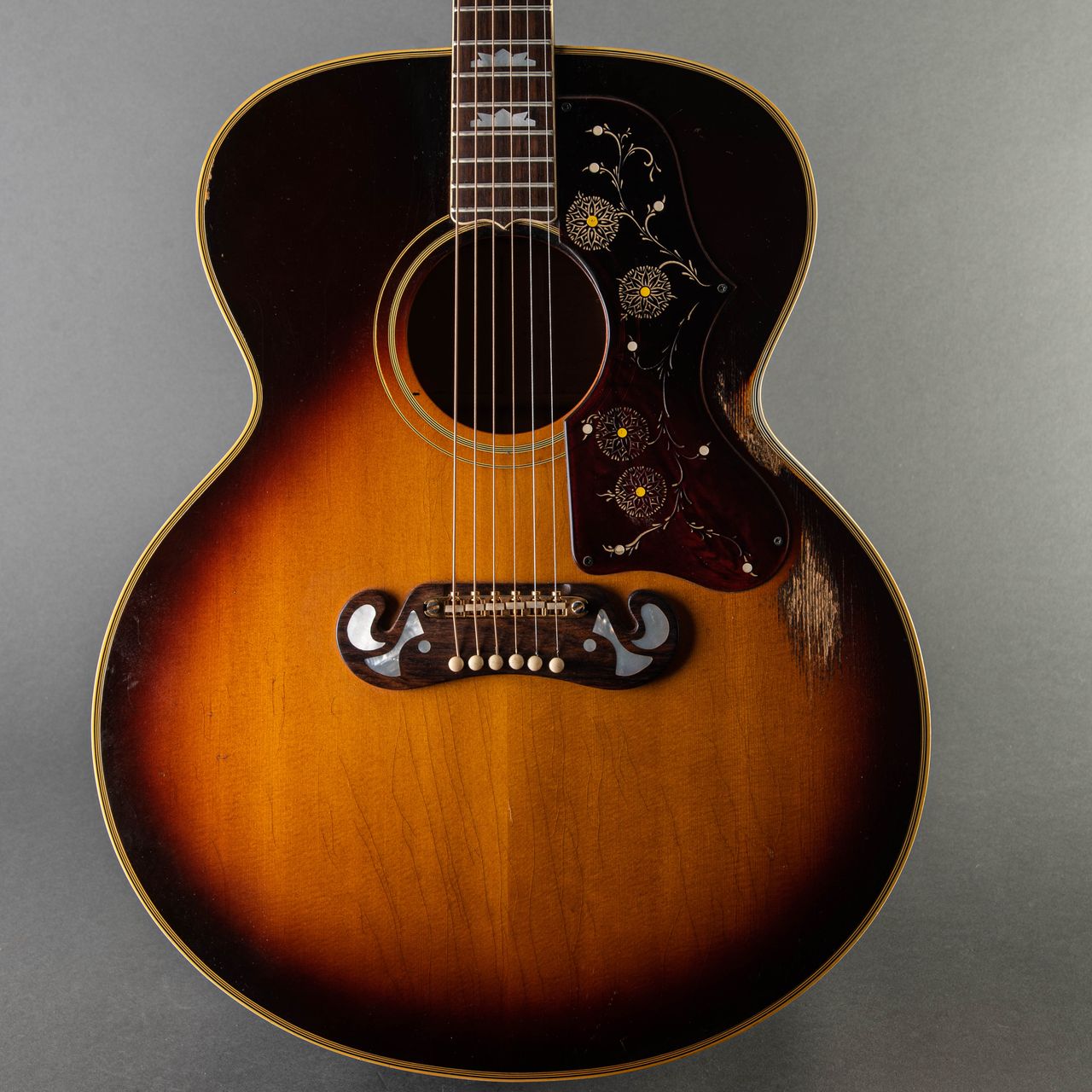 Instrumentally, both Paul and John are strumming their acoustic guitars during this verse while George performs interesting bass lines on his electric guitar and Ringo continues his floor tom beats, culminating in a cymbal crash on the downbeat of the fifteenth measure. John sings the lower melody line throughout while Paul sings harmony, all culminating in the final word “home” in the fifteenth measure, which is held out vocally during the instrumental 'Beatles break.' Instrumentally, both Paul and John are strumming their acoustic guitars during this verse while George performs interesting bass lines on his electric guitar and Ringo continues his floor tom beats, culminating in a cymbal crash on the downbeat of the fifteenth measure. John sings the lower melody line throughout while Paul sings harmony, all culminating in the final word “home” in the fifteenth measure, which is held out vocally during the instrumental 'Beatles break.'
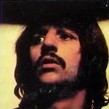 This is then followed by a direct repeat of another intro and verse that is instrumentally and vocally identical to the first except for lyrical changes. One noticeable difference in this verse, however, is an additional measure of 4/4 at the conclusion, thus making this a sixteen-measure verse. Ringo fills the break in measures fifteen and sixteen with simple eighth-note beats on snare drum that gradually rise in volume, this acting as a segue into the bridge that follows. This is then followed by a direct repeat of another intro and verse that is instrumentally and vocally identical to the first except for lyrical changes. One noticeable difference in this verse, however, is an additional measure of 4/4 at the conclusion, thus making this a sixteen-measure verse. Ringo fills the break in measures fifteen and sixteen with simple eighth-note beats on snare drum that gradually rise in volume, this acting as a segue into the bridge that follows.
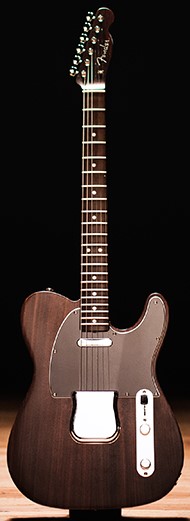 This bridge is strictly in 4/4 and is five measures in length. Paul sings solo throughout except for the final words “out ahead,” which shows John joining in quietly with a lower harmony. George plays somewhat busy ascending bass lines during the first four measures, a descending figure being played in the fifth measure. Ringo plays a quick open high-hat roll at the end of the first measure in imitation of Paul's fast acoustic guitar strums at this point, but then drops out entirely for the second measure. The drummer then resumes his floor tom beats for the remainder of the bridge, accentuating this a bit more as a drum fill in the fifth measure to usher in the next verse. Likewise, both Paul and John resume their guitar strumming in measures three through five, Paul moving into double-time strums during the fifth measure. This bridge is strictly in 4/4 and is five measures in length. Paul sings solo throughout except for the final words “out ahead,” which shows John joining in quietly with a lower harmony. George plays somewhat busy ascending bass lines during the first four measures, a descending figure being played in the fifth measure. Ringo plays a quick open high-hat roll at the end of the first measure in imitation of Paul's fast acoustic guitar strums at this point, but then drops out entirely for the second measure. The drummer then resumes his floor tom beats for the remainder of the bridge, accentuating this a bit more as a drum fill in the fifth measure to usher in the next verse. Likewise, both Paul and John resume their guitar strumming in measures three through five, Paul moving into double-time strums during the fifth measure.
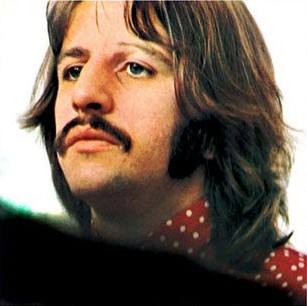 Since this is a live studio performance with no overdubs, the verse, bridge and verse that follows next are instrumentally and vocally identical to what have been played previously, except for a new set of lyrics in the last verse. Both of these verses are sixteen measures in length, the last measure in the final verse omitting Ringo's snare drum beats to create the illusion that the song has concluded. Since this is a live studio performance with no overdubs, the verse, bridge and verse that follows next are instrumentally and vocally identical to what have been played previously, except for a new set of lyrics in the last verse. Both of these verses are sixteen measures in length, the last measure in the final verse omitting Ringo's snare drum beats to create the illusion that the song has concluded.
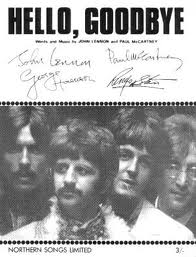 Instead, this is followed by an extended repeat of the intro, which acts as the song's conclusion. This final element of the recording is thirteen measures long, The Beatles manually descreasing the volume of their instruments as the measures progress to mimic the fade-out of a released record. During this mock fade-out, Paul continues his octave-alternating guitar riff while adding the phrases “We're going home,” “you better believe it” and “goodbye” randomly in a subdued manner. John keeps strumming his guitar and, starting in the fifth measure, whistles in imitation of the coda heard in “Hello Goodbye,” delivering a final whistling riff when the song fades away to nothing in the thirteenth measure followed by him tapping twice on his guitar to deliver the final word. George switches to repeating a three note descending bass figure in the final measures while Ringo continues his plodding floor tom beats until the song disolves into nothing. Instead, this is followed by an extended repeat of the intro, which acts as the song's conclusion. This final element of the recording is thirteen measures long, The Beatles manually descreasing the volume of their instruments as the measures progress to mimic the fade-out of a released record. During this mock fade-out, Paul continues his octave-alternating guitar riff while adding the phrases “We're going home,” “you better believe it” and “goodbye” randomly in a subdued manner. John keeps strumming his guitar and, starting in the fifth measure, whistles in imitation of the coda heard in “Hello Goodbye,” delivering a final whistling riff when the song fades away to nothing in the thirteenth measure followed by him tapping twice on his guitar to deliver the final word. George switches to repeating a three note descending bass figure in the final measures while Ringo continues his plodding floor tom beats until the song disolves into nothing.
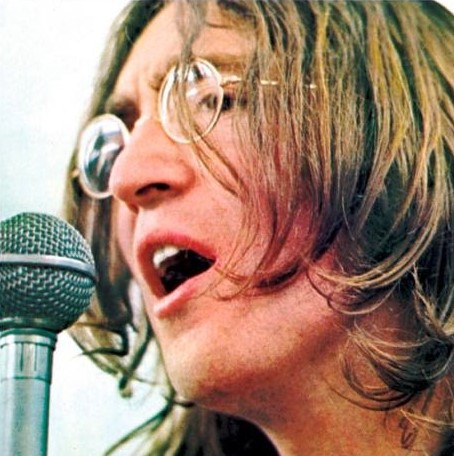 While much has been said regarding the group's uncooperative behavior during this period, all four Beatles are shown here to be working together nicely while sticking to their commitment to delivering a band performance without overdubs. The many filmed versions of “Two Of Us” delivered on this day show them as seasoned professionals, multiple takes being required only because of Lennon's flubbed lyrics, as witnessed on outtakes. While much has been said regarding the group's uncooperative behavior during this period, all four Beatles are shown here to be working together nicely while sticking to their commitment to delivering a band performance without overdubs. The many filmed versions of “Two Of Us” delivered on this day show them as seasoned professionals, multiple takes being required only because of Lennon's flubbed lyrics, as witnessed on outtakes.
American Releases
The first and primary release of “Two Of Us” was on the “Let It Be” soundtrack album, which came out in the US on May 18th, 1970. It was distributed in a gate-fold jacket in America, as opposed to the box set with photo book that was released in the UK. It spent four weeks in the top spot of the Billboard album chart and has sold well over four million copies in America alone.
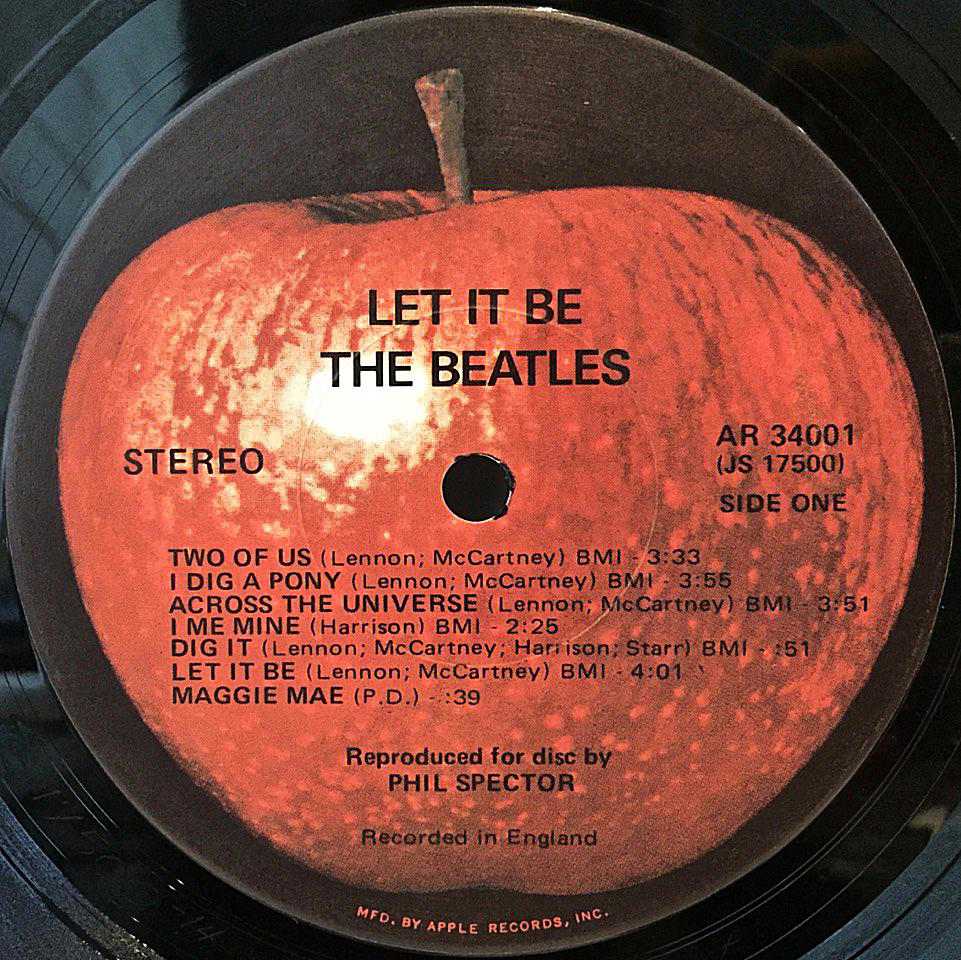 Despite having a red Apple Records label, "Let It Be" was distributed by United Artists Records upon initial release, although it eventually was dropped by the label's roster a few years later. While Capitol kept all other US Beatles albums in print throughout the '70s, “Let It Be” was the only LP from the group that wasn't legitimately available for a number of years. This was rectified in 1978, however, when Capitol purchased the UA catalog and rereleased the “Let It Be” album once again, this time in a standard silver sleeve cover. The album first appeared on compact disc on October 10th, 1987, and then as a remastered CD on September 9th, 2009. A newly mixed vinyl and CD edition of the album was then released on October 15th, 2021, as well as a special edition picture disc. Despite having a red Apple Records label, "Let It Be" was distributed by United Artists Records upon initial release, although it eventually was dropped by the label's roster a few years later. While Capitol kept all other US Beatles albums in print throughout the '70s, “Let It Be” was the only LP from the group that wasn't legitimately available for a number of years. This was rectified in 1978, however, when Capitol purchased the UA catalog and rereleased the “Let It Be” album once again, this time in a standard silver sleeve cover. The album first appeared on compact disc on October 10th, 1987, and then as a remastered CD on September 9th, 2009. A newly mixed vinyl and CD edition of the album was then released on October 15th, 2021, as well as a special edition picture disc.
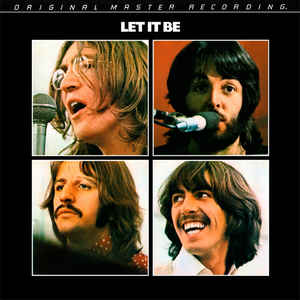 In November of 1986, the “Let It Be” soundtrack album was also made available as an “Original Master Recording” release by Mobile Fidelity Sound Lab. Their practice was to prepare a new master utilizing half-speed mastering technology from the original master tapes, in this case using what was referred to therein as a “corrected copy tape.” The album was issued in both a single sleeve and gatefold cover, the single sleeve cover being the rarest. In November of 1986, the “Let It Be” soundtrack album was also made available as an “Original Master Recording” release by Mobile Fidelity Sound Lab. Their practice was to prepare a new master utilizing half-speed mastering technology from the original master tapes, in this case using what was referred to therein as a “corrected copy tape.” The album was issued in both a single sleeve and gatefold cover, the single sleeve cover being the rarest.
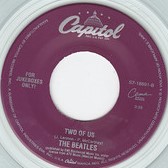 On January 24th, 1996, “Two Of Us” was released as a single in the Capitol Cema Series on clear vinyl among their “For Jukeboxes Only!” series. The song was designated as the b-side to “Across The Universe,” this release becoming quite rare as time went on. On January 24th, 1996, “Two Of Us” was released as a single in the Capitol Cema Series on clear vinyl among their “For Jukeboxes Only!” series. The song was designated as the b-side to “Across The Universe,” this release becoming quite rare as time went on.
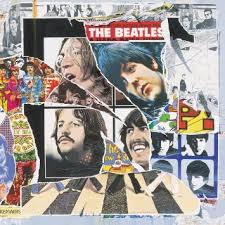 A version of “Two Of Us” as recorded at Apple Studios on January 24th, 1969, was released on the compilation album “Anthology 3” on October 28th, 1996. This version, as described above, displays The Beatles first adopting the Everly Brothers-like acoustic arrangement of the song, complete with Paul's “Take it, Phil!” encouragement to John before the fourth verse begins. A version of “Two Of Us” as recorded at Apple Studios on January 24th, 1969, was released on the compilation album “Anthology 3” on October 28th, 1996. This version, as described above, displays The Beatles first adopting the Everly Brothers-like acoustic arrangement of the song, complete with Paul's “Take it, Phil!” encouragement to John before the fourth verse begins.
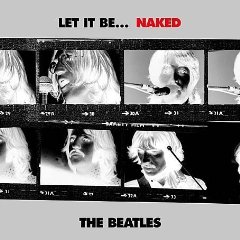 November 17th, 2003, was the release date for “Let It Be...Naked,” a project that was proposed by Paul McCartney to strip away all overdubs, the most noteworthy being Phil Spector's orchestration, to present the material as they originally intended. The same take of “Two Of Us” from January 31st, 1970 was used here that was used on the original “Let It Be” album, but with a slight digital fix of an acoustic guitar mistake made by John. A bonus disc entitled “Fly On The Wall” was included with this album featuring snipets of songs and dialog caught on tape during their January rehearsals. The final few seconds of a take of “Two Of Us” is contained therein, which features John's whistling conclusion November 17th, 2003, was the release date for “Let It Be...Naked,” a project that was proposed by Paul McCartney to strip away all overdubs, the most noteworthy being Phil Spector's orchestration, to present the material as they originally intended. The same take of “Two Of Us” from January 31st, 1970 was used here that was used on the original “Let It Be” album, but with a slight digital fix of an acoustic guitar mistake made by John. A bonus disc entitled “Fly On The Wall” was included with this album featuring snipets of songs and dialog caught on tape during their January rehearsals. The final few seconds of a take of “Two Of Us” is contained therein, which features John's whistling conclusion
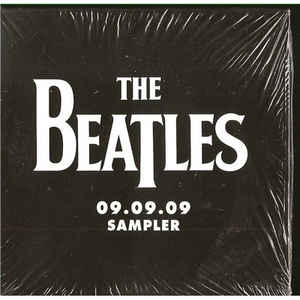 On September 9th, 2009, in promotion of the remastered Beatles catalog, the "09.09.09 Sampler" was distributed to retailers and radio programmers, "Two Of Us" being featured therein. This has become quite the find for collectors. On September 9th, 2009, in promotion of the remastered Beatles catalog, the "09.09.09 Sampler" was distributed to retailers and radio programmers, "Two Of Us" being featured therein. This has become quite the find for collectors.
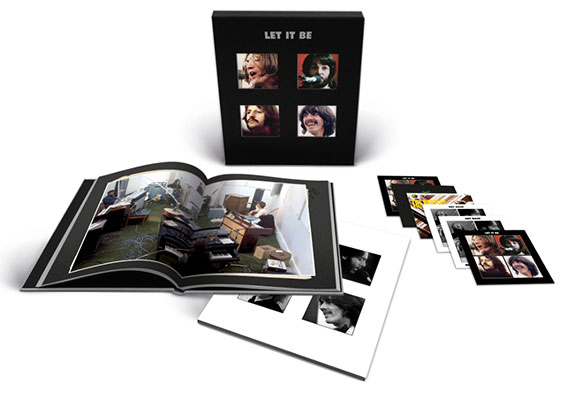 On October 15th, 2021, various editions of the "Let It Be" album were released that feature interesting versions of "Two Of Us." The "Deluxe" 2CD set features the newly remixed Giles Martin version of the song as well as "take 4" as recorded on January 24th, 1969, while both the "Super Deluxe" 5CD + Blu-ray edition and the "Super Deluxe" 4LP + 1 12" EP edition also contain the final take of "Two Of Us" recorded on that day, which was originally included on Glyn Johns' aborted 1969 "Get Back" album. On October 15th, 2021, various editions of the "Let It Be" album were released that feature interesting versions of "Two Of Us." The "Deluxe" 2CD set features the newly remixed Giles Martin version of the song as well as "take 4" as recorded on January 24th, 1969, while both the "Super Deluxe" 5CD + Blu-ray edition and the "Super Deluxe" 4LP + 1 12" EP edition also contain the final take of "Two Of Us" recorded on that day, which was originally included on Glyn Johns' aborted 1969 "Get Back" album.
Live Performances
If The Beatles had gone to the stage in January of 1969 as originally proposed, it is quite possible that they would have included “Two Of Us” in their set list. However, since their final concert performance was delegated to the roof of Apple headquarters on Savile Row, London, on January 30th, 1969, they stuck strictly to their newest compositions featuring electric instruments.
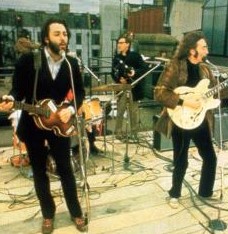 Since the acoustic-based “Two Of Us” wasn't played on the roof, they officially performed it in the basement studio of that same building on the following day, January 31st, 1969, Paul and Ringo dressing up for the occasion (Ringo even wearing a suit and tie). As described above, they ran through the song various times before the film crew in an attempt to create the perfect performance for the upcoming film and soundtrack album. Since the acoustic-based “Two Of Us” wasn't played on the roof, they officially performed it in the basement studio of that same building on the following day, January 31st, 1969, Paul and Ringo dressing up for the occasion (Ringo even wearing a suit and tie). As described above, they ran through the song various times before the film crew in an attempt to create the perfect performance for the upcoming film and soundtrack album.
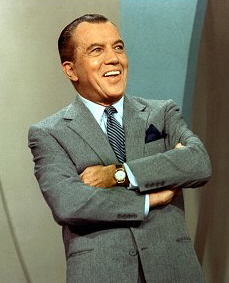 In early 1970, in order to promote the soon-to-be-released movie and album, Apple sent 16mm color footage of “Two Of Us,” “The Long And Winding Road” and the latest single “Let It Be,” all filmed in the Apple basement on the same day, to television networks in Britain and America. Along with “Let It Be,” the “Ed Sullivan Show” aired this promo clip of “Two Of Us” on March 1st of that year during an hour-long tribute to The Beatles entitled “The Beatles Songbook.” 'Take 12' of the song, as contained on the “Let It Be” album, was featured in this clip, resulting in the unique experience of visually witnessing The Beatles performing the actual studio recording used for the released version. In early 1970, in order to promote the soon-to-be-released movie and album, Apple sent 16mm color footage of “Two Of Us,” “The Long And Winding Road” and the latest single “Let It Be,” all filmed in the Apple basement on the same day, to television networks in Britain and America. Along with “Let It Be,” the “Ed Sullivan Show” aired this promo clip of “Two Of Us” on March 1st of that year during an hour-long tribute to The Beatles entitled “The Beatles Songbook.” 'Take 12' of the song, as contained on the “Let It Be” album, was featured in this clip, resulting in the unique experience of visually witnessing The Beatles performing the actual studio recording used for the released version.
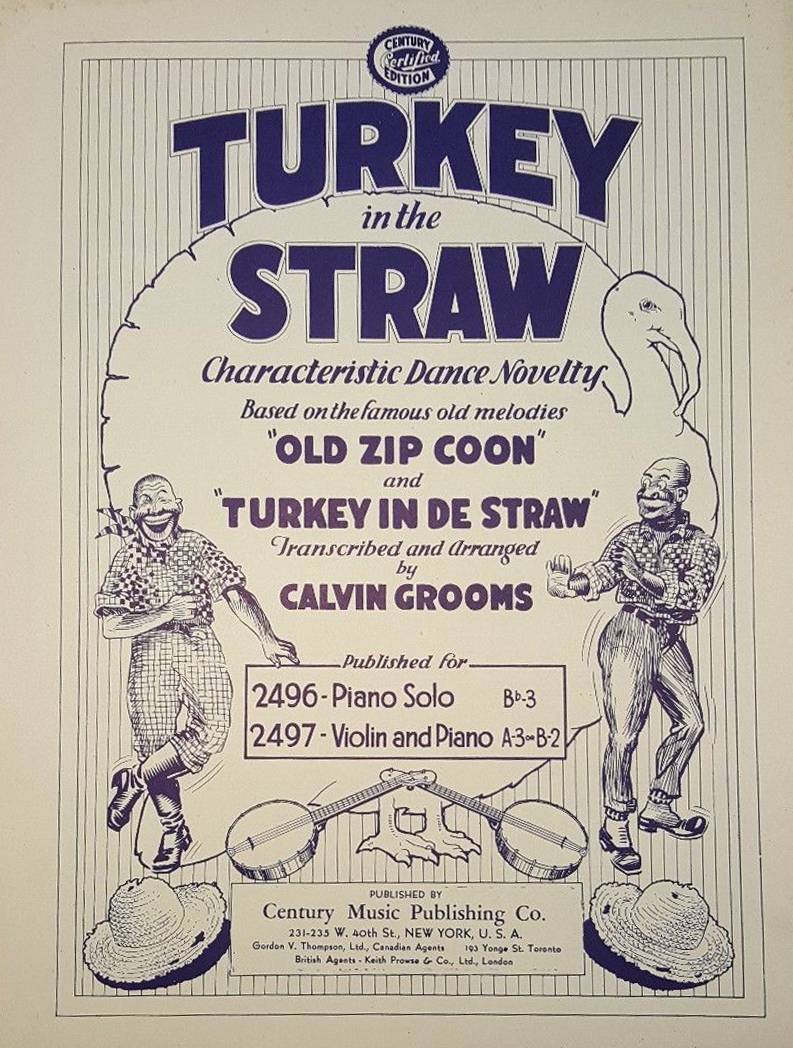 One detail needs to be mentioned, however, concerning this promo film of “Two Of Us.” After the final 'Beatles break,' following the final harmonized “we're going home” lyric (while George is candidly rubbing his face), the film-makers decided to switch to using footage from another take of the song to conclude the clip. Paul's final “goodbye” comments are different here, as well as John's whistling, which becomes a simulation of both “Hello Goodbye” and “Turkey In The Straw.” One detail needs to be mentioned, however, concerning this promo film of “Two Of Us.” After the final 'Beatles break,' following the final harmonized “we're going home” lyric (while George is candidly rubbing his face), the film-makers decided to switch to using footage from another take of the song to conclude the clip. Paul's final “goodbye” comments are different here, as well as John's whistling, which becomes a simulation of both “Hello Goodbye” and “Turkey In The Straw.”
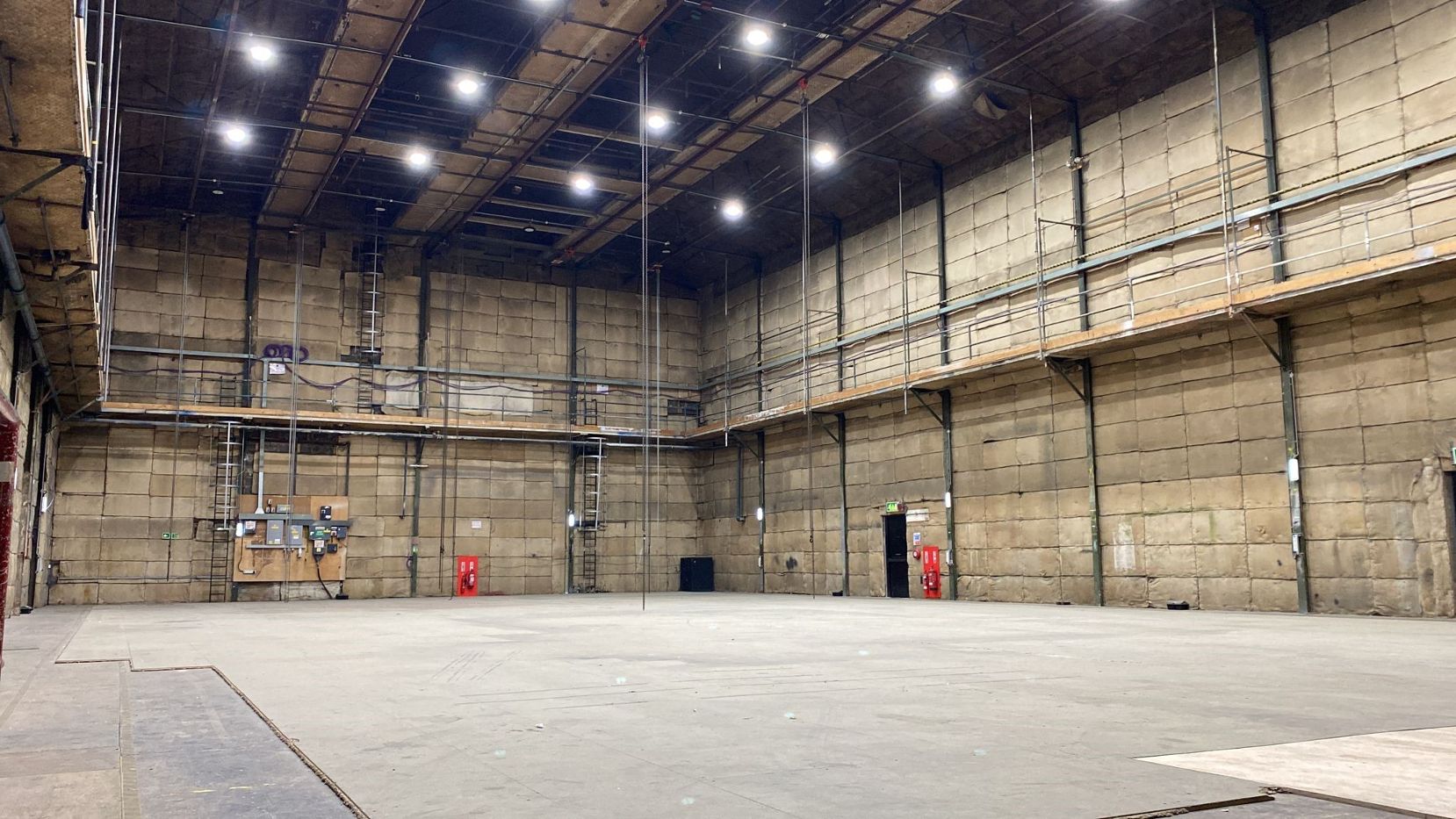 This footage was also used in the resulting “Let It Be” film, which was officially released on May 13th, 1970. The clip is seen about 45 minutes into the movie, at a point chronologically where the arrangement of the song had been perfected. However, only a few minutes into the film, we witness footage of the band rehearsing “Two Of Us"in its electric guitar incarnation at Twickenham Studios, possibly filmed on January 6th, 1969. John and Paul are seen here singing into the same microphone while playing their instruments, many times flubbing their lyrics but having a good deal of fun in the process. This footage was also used in the resulting “Let It Be” film, which was officially released on May 13th, 1970. The clip is seen about 45 minutes into the movie, at a point chronologically where the arrangement of the song had been perfected. However, only a few minutes into the film, we witness footage of the band rehearsing “Two Of Us"in its electric guitar incarnation at Twickenham Studios, possibly filmed on January 6th, 1969. John and Paul are seen here singing into the same microphone while playing their instruments, many times flubbing their lyrics but having a good deal of fun in the process.
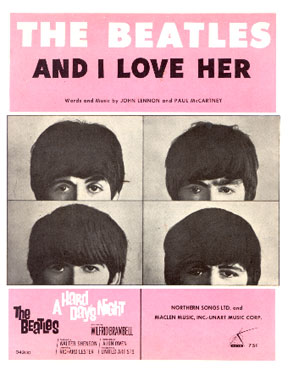 Paul did decide to revive “Two Of Us” for most of his “Back In The World” tour. He first performed the song on April 9th, 2003 in Manchester, England, and then continued including it throughout the rest of the tour, which ended on June 1st of that year in Liverpool. He revived it again on his “Up And Coming Tour,” including the song periodically as an alternate with “And I Love Her” in his set list. This tour ran from March 28th, 2010 (Glendale, Arizona) to June 10th, 2011 (Las Vegas, Nevada). Paul did decide to revive “Two Of Us” for most of his “Back In The World” tour. He first performed the song on April 9th, 2003 in Manchester, England, and then continued including it throughout the rest of the tour, which ended on June 1st of that year in Liverpool. He revived it again on his “Up And Coming Tour,” including the song periodically as an alternate with “And I Love Her” in his set list. This tour ran from March 28th, 2010 (Glendale, Arizona) to June 10th, 2011 (Las Vegas, Nevada).
Conclusion
Despite the detailed descriptions Paul has given in interviews, many Beatles fans wistfully interpret “Two Of Us” as a song about John and Paul. Given the fact that they harmonize throughout, and are seen in the “Let It Be” film singing this song into a single microphone as they had done in the early days, one could easily interpret the lyrics accordingly.
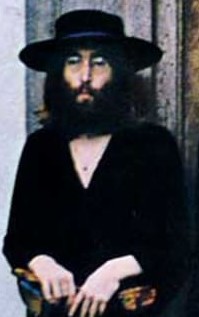 For instance, John and Paul were in the habit of “sending postcards” and “writing letters,” their wealth from songwriting royalties did indeed result in them “spending someone's hard earned pay,” and they did indeed have “memories longer than the road that stretches out ahead,” optimistically forseeing a prosperous partnership for the years to come. You could also interpret the lyric “chasing paper / getting nowhere” as a description of their contractual problems, thus resulting in a full-blown lawsuit just two days after the “Get Back” sessions ended. For instance, John and Paul were in the habit of “sending postcards” and “writing letters,” their wealth from songwriting royalties did indeed result in them “spending someone's hard earned pay,” and they did indeed have “memories longer than the road that stretches out ahead,” optimistically forseeing a prosperous partnership for the years to come. You could also interpret the lyric “chasing paper / getting nowhere” as a description of their contractual problems, thus resulting in a full-blown lawsuit just two days after the “Get Back” sessions ended.
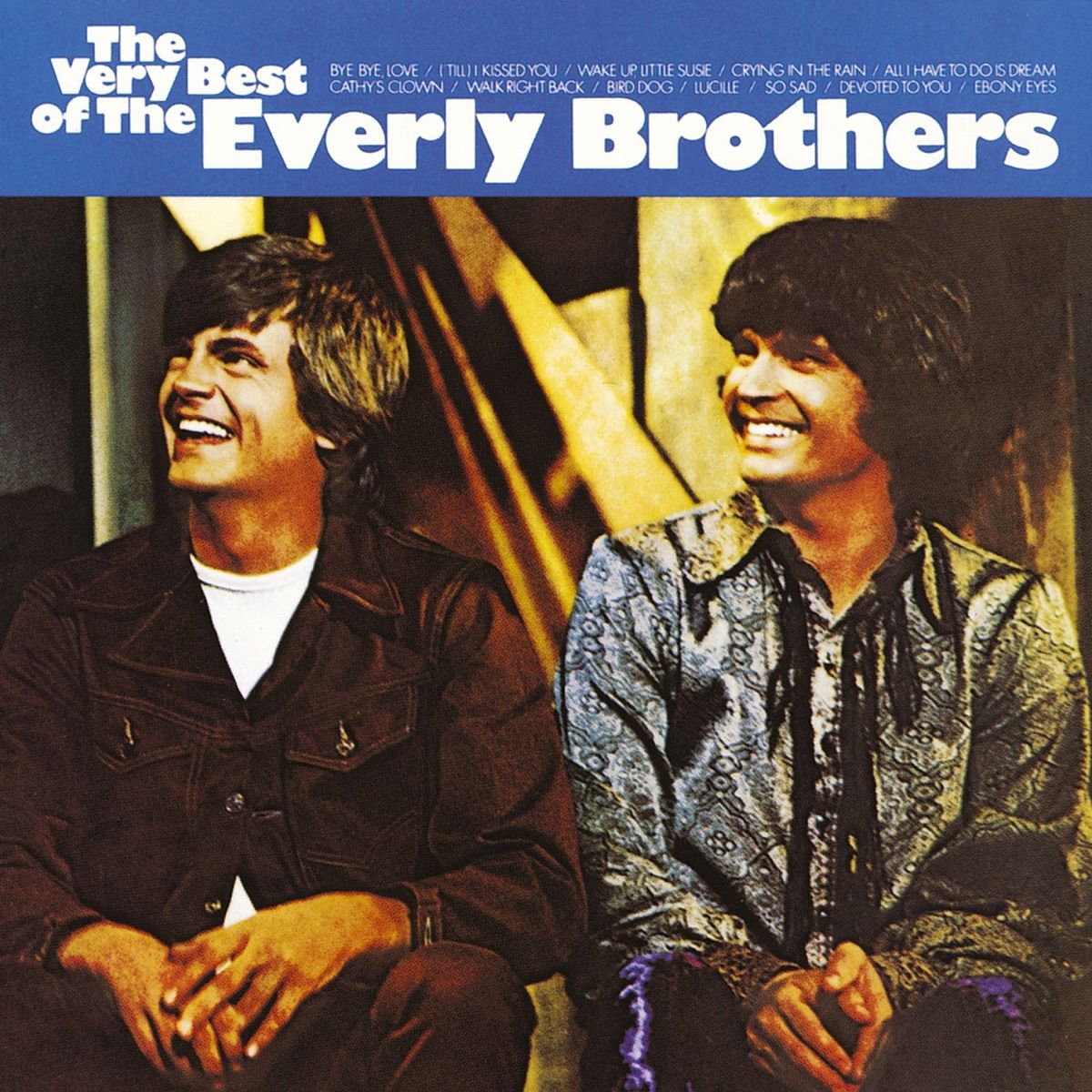 Pairing all this “evidence” with the Everly Brothers vocal arrangement chosen for the song, this duo being early heroes of The Beatles, the conclusion that "Two Of Us" is about John and Paul appears obvious but is ultimately incorrect. "It was certainly about me and Linda," Paul states in the "Track By Track" section of the "Let It Be" Anniversary book. "Anytime in The Beatles you ever said 'two of us' or 'you and me,' it could often relate to the other guys and 'Two Of Us' might, when John and I were doing our Everlys bit, seem like it was the two of us. This is what people did with The Beatles all the time - read into these things the significance. I always like to pull people back and say, 'It actually wasn't meant like that.' But then, at the same time, I like to give people the freedom and say, 'But you can take it like that. It's kind of interesting like that.'" The result is that many will insist that this mistaken conclusion is the case and will balk at any other explanation. They may also believe that Paul died in 1966, and you can't convince them otherwise. So goes the fanaticism of Beatles enthusiasts! Pairing all this “evidence” with the Everly Brothers vocal arrangement chosen for the song, this duo being early heroes of The Beatles, the conclusion that "Two Of Us" is about John and Paul appears obvious but is ultimately incorrect. "It was certainly about me and Linda," Paul states in the "Track By Track" section of the "Let It Be" Anniversary book. "Anytime in The Beatles you ever said 'two of us' or 'you and me,' it could often relate to the other guys and 'Two Of Us' might, when John and I were doing our Everlys bit, seem like it was the two of us. This is what people did with The Beatles all the time - read into these things the significance. I always like to pull people back and say, 'It actually wasn't meant like that.' But then, at the same time, I like to give people the freedom and say, 'But you can take it like that. It's kind of interesting like that.'" The result is that many will insist that this mistaken conclusion is the case and will balk at any other explanation. They may also believe that Paul died in 1966, and you can't convince them otherwise. So goes the fanaticism of Beatles enthusiasts!
Song Summary
“Two Of Us”
Written by: John Lennon / Paul McCartney
- Song Written: September, 1968
- Song Recorded: January 31, 1969
- First US Release Date: May 18, 1970
- First US Album Release: Apple #AR-34001 “Let It Be”
- British Album Release: Apple #PCS 7096 “Let It Be”
- US Single Release: Capitol Cema #S7-18891B (b-side to “Across The Universe”)
- Highest Chart Position: n/a
- Length: 3:33
- Key: G major
- Producer: George Martin, Phil Spector
- Engineers: Glyn Johns, Alan Parsons
Instrumentation (most likely):
- Paul McCartney - Vocals, Acoustic Guitar (1967 Martin D-28)
- John Lennon - Vocals, Acoustic Guitar (1964 Gibson J-200 Sunburst)
- George Harrison - Lead Guitar as Bass (1968 Fender Rosewood Telecaster)
- Ringo Starr - Drums (1968 Ludwig Hollywood Maple)
Written and compiled by Dave Rybaczewski
|
IF YOU WOULD LIKE TO MAKE A DONATION TO KEEP THIS WEBSITE UP AND RUNNING, PLEASE CLICK BELOW!
Sign Up Below for our MONTHLY BEATLES TRIVIA QUIZ!
|